
Spring 2019 • Number 31
Celebrating the Local Food and Drink of Santa Cruz, Monterey and San Benito Counties
DAVID KINCH PREPARES FOR MENTONE CANNABIS TOURS • BROCCOLI RABE • SUMMER CAMPS RAISING CHICKENS • PEBBLE’S BIG YEAR
Member of Edible Communities
Named








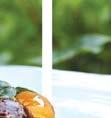
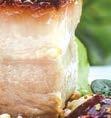
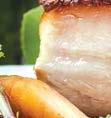




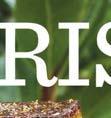















ii edible MONTEREY BAY SPRING 2019 1440.ORG/EMB | SCOTTS VALLEY, CA | 1-833-393-7929
for the number of minutes in a day, 1440 Multiversity is a new learning destination in the California redwoods between Santa Cruz and Silicon Valley. Enjoy cutting-edge weekend and 5-day programs in personal, professional, and spiritual growth alongside unforgettable moments of relaxation and renewal. JACK KORNFIELD, RICHARD DAVIDSON & OTHER EXPERTS The Science of Happiness: A Greater Good Gathering MAY 2 – 5, 2019 JOEL FUHRMAN Live Past 100: Advances in Nutritional Science for Living Healthfully JULY 14 – 19, 2019 SUSAN POWERS & KAIA YUE Delicious PlantBased Cooking: Mother’s Day Retreat MAY 10 – 12, 2019








COME SEE WHAT THE BUZZ IS ABOUT CVACONLINE.COM 831.624.2737 SUMMER CAMP ADVENTURE WITH A SIDE OF FUN SPLASH CAMP AGES 6-10 TENNIS CAMP AGES 6-18 OTTER CAMP AGES 5-8 JUNE 3RD THRU AUGUST 2ND
4 GR IST FOR THE MILL
6
EDIBLE NOTABLES
Celebrating a century of excellence in food and wine, Pebble Beach is gearing up for a very special year; Cannabis farmers get ready to show off their amazing farms and talk about their growing methods in a different type of farm tour
15 WH AT’S IN SEASON
BROCCOLI RABE
A vegetable with many names, this delicious brassica has found a New World home in the Salinas Valley
23
FOODSHED SPRING FARMERS’ MARKETS
A complete guide for the Monterey Bay area

26 BACK OF THE HOUSE PLEASURE PURVEYOR
The Monterey Bay area’s most famous chef has been planting the seeds of his first Santa Cruz County restaurant all his life
33
EDIBLE ADVENTURE EAT THE WORLD
A local food writer shares lessons from eating, drinking and fasting in 15 countries in 13 months
40
EDIBLE COMMUNITY HUNGER ON CAMPUS
How universities and colleges around the Monterey Bay are working to address the basic needs of students
44
EDIBLE GUIDES FOOD & FARMS
Kids get to have all the fun at these food-focused summer camps

49
EDIBLE D.I.Y. FEATHERED FLOCK
From coop to soup, the joys of raising backyard chickens
57
DINE LOCAL GUIDE
72 LAST CALL CA MP FIRE BITTERS
A good taste for a good cause
RECIPES IN THIS ISSUE
19 Classic Italian Sausage and Broccoli Rabe
19 Tha i Broccoli Rabe Soup
54 Beet Deviled Eggs
72 Ca mp Fire Catahoula Cocktail
COVER PHOTOGRAPH
By Jessica Tunis
CONTENTS PHOTOGRAPH
Courtesy Life Lab Summer Camp on the UC Santa Cruz Farm
2 edible MONTEREY BAY SPRING 2019
Contents
Great Food with a Breathtaking View
Just being near the water makes you happier, creative, and more relaxed. Quench your thirst for serenity and your hunger for tasty local fare! At Schooners, we invite you to refresh your outlook and your appetite with our new menus while overlooking the bay. Great food, great view... let the sea cast her spell.

www.ediblemontereybay.com 3 Reservations: 831-372-2628 | SchoonersMonterey.com | Monterey Plaza Hotel & Spa
GRIST FOR THE MILL edible
MONTEREY BAY
EDITOR AND PUBLISHER
Shelby, Kate and I hopped on a red-eye flight to the East Coast last month to represent Edible Monterey Bay at the national conference of Edible magazine publishers—which we will host here in the Monterey Bay area in 2021!
There are about 80 independently owned Edible magazines published in the United States and Canada, but we only get together once a year so it’s always an exciting time—exchanging ideas, talking trends and indulging in the best local cuisine.
The big news at this year’s conference—superbly hosted by our friends at Edible Sarasota—was the return of founder Tracey Ryder to the helm of our network. Tracey, who started the very first magazine, Edible Ojai, had the vision to grow that small magazine into the community of local food publications you see around the country today.
But what always impresses me most at these meetings is the way magazines in very different parts of the nation are writing about many of the same issues we cover here at home. Food justice in Indianapolis. Immigration in Hudson Valley, New York. Food waste in Nashville. Sustainable seafood in Cincinnati! And supporting local organic farms, everywhere from San Diego to Maine.
We’re fiercely proud that our Monterey Bay area is an edible paradise where we probably have more than our fair share of organic farms, local wineries, craft breweries, food artisans and excellent restaurants, but it’s also important to remember we don’t have a monopoly on the local food movement. Like-minded people are doing amazing things with food and pushing the envelope on sustainability across the country. Be sure to read about them in our sister publications every time you travel.
As for this spring issue of EMB, we know you’ll enjoy reading Sarah Wood’s exclusive report on how top chef David Kinch is preparing to open his Aptos restaurant, Mentone.
Kathryn McKenzie delves into the history of the Pebble Beach food scene as the storied resort celebrates its centennial year and gets ready to host the U.S. Open. Emily Thomas introduces us to a new kind of agritourism involving cannabis farms. Jessica Tunis tempts us into adopting a flock of hens or at least making the most beautiful Easter eggs ever.
And get ready for a little armchair traveling as Mark C. Anderson recounts some of what he learned about food while spending the past year on a journey around the world.
As the days get longer and blossoms begin to burst, we hope you enjoy the marvelous rebirth that comes with spring. And we hope that this issue of EMB motivates you to get out to the farmers’ markets and to visit some of the fine shops and restaurants featured on our pages—especially our much-appreciated advertisers that made this issue possible.
Happy spring!
Deborah Luhrman Publisher
Deborah Luhrman deborah@ediblemontereybay.com 831.600.8281
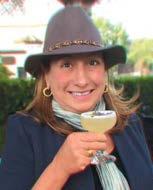
EDITOR-AT-LARGE Sarah Wood FOUNDERS Sarah Wood and Rob Fisher
COPY EDITOR Doresa Banning
LAYOUT & DESIGN Matthew Freeman and Tina Bossy-Freeman
AD DESIGNERS Bigfish Smallpond Design • Jane Bolling Design • Zephyr Pfotenhauer
• Melissa Thoeny Designs
CONTRIBUTORS
Mark C. Anderson • Crystal Birns
Jamie Collins • Margaux Gibbons • Ellen
Farmer • Coline LeConte • Michelle Magdalena Kathryn McKenzie • Zephyr Pfotenhauer
David Royal • Emily Thomas • Patrick Tregenza Jessica Tunis • Amber Turpin • Sarah Wood
ADVERTISING SALES
ads@ediblemontereybay.com • 831.600.8281
Shelby Lambert shelby@ediblemontereybay.com Kate Robbins kate@ediblemontereybay.com Aga Simpson aga@ediblemontereybay.com
DISTRIBUTION MANAGER

Mick Freeman • 831.419.2975
CONTACT US: Edible Monterey Bay P.O. Box 487 Santa Cruz, CA 95061 www.ediblemontereybay.com 831.600.8281 info@ediblemontereybay.com
Edible Monterey Bay is published quarterly. All rights reserved. No part of this publication may be used without written permission of the publisher. Subscriptions are $28 per year at www. ediblemontereybay.com. Every effort is made to avoid errors, misspellings and omissions. If, however, an error comes to your attention, please accept our apologies and notify us. We also welcome letters to the above address. Thank you.

4 edible MONTEREY BAY SPRING 2019





www.ediblemontereybay.com 5 Mobile Service Passionfish restaurant VoVoted Best Restaurant Monterey County 2018-2014, 2012-2011 Voted Best Restaurant Pacific Grove 2018-2005 ~ Monterey County Weekly ~ Carmel Pine Cone 2018 James Beard National Wine Program Semi-Finalist 701 Lighthouse Ave Pacific Grove, CA 831.655.3311 • passionfish.net Served nightly from 5pm Voted Best Restaurant Pacific Grove 2018, 2015, 2010, 2009 Voted Best Restaurant for Seafood 2018, 2016-2008 Eat responsibly. www.readycyclepackaging.com reduce plastic, go sustainable 100% recyclable. Sustainable for the planet. Good for your produce. ® MEARTH SUMMER Immersive, inspiring week-long camps for ages 3-14. Campers harvest from our summer gardens, cook and learn in our state-of-the-art, LEED-certified classroom, and explore on our award-winning 10-acre Habitat. Register at MEarthCarmel.org
EDIBLE NOTABLES
PEBBLE’S BIG YEAR
Celebrating a century of excellence in food and wine, Pebble Beach is gearing up for a very special year
 BY KATHRYN MCKENZIE PHOTOGRAPHY BY MARGAUX GIBBONS
BY KATHRYN MCKENZIE PHOTOGRAPHY BY MARGAUX GIBBONS
It all began with food in Pebble Beach…and even today, with golf and glamour grabbing much of the attention, the Monterey Peninsula’s most luxurious enclave still offers some of the finest culinary experiences on the West Coast.
This year, Pebble Beach celebrates its 100th anniversary in a big way, hosting one of golf’s most prestigious tournaments, the U.S. Open Championship on June 10–16. To mark its centennial year and welcome guests, a brand new Visitor Center was built and is open to the public from 8am–5pm daily. It brings the story of the resort’s past century to life through attractive displays, a huge interactive relief map of 17-Mile Drive and a glitzy floor-to-ceiling video board.
But Pebble Beach, as a destination, began in the simplest of ways: as a pleasant place to take a Sunday drive and to enjoy a meal at a simple lodge built of logs.

The original 17-Mile Drive opened in 1881 and soon became a popular route for horse-drawn carriage rides beginning and ending at the Hotel Del Monte. The drive attracted even more visitors with the advent of the automobile, and in 1909, the original Pebble Beach Lodge opened overlooking Stillwater Cove.

“It had wonderful food and was the site of banquets and parties in the large dining room,” says longtime Pebble Beach historian Neal Hotelling. “In fact, most of the lodge was the dining room.”
Fire destroyed the original lodge in 1917, but it was rebuilt and reopened 100 years ago in 1919 (along with Pebble Beach Golf Links) by developer Samuel F.B. Morse, an East Coast transplant who had fallen
head over heels in love with the Monterey Peninsula. Morse acquired both the Hotel Del Monte and Pebble Beach properties from the Pacific Improvement Company, and immediately protected green belt areas and prioritized the preservation of the area’s natural beauty.
The lure of Pebble Beach grew stronger when it became a soughtafter location for filming movies, from Greta Garbo’s Anna Karenina in 1934 to dozens more, including National Velvet, Captain January, Edge of Darkness and Forever Amber. It soon became a retreat for the rich and famous, and a honeymoon spot for actress Ginger Rogers, aviator Charles Lindbergh and other luminaries.
All those visitors needed to be fed and watered. The Monkeyshines Room at The Lodge was its original bar, “with murals of comical monkeys all over the walls,” says Hotelling. The jungle décor was phased out in 1949, but the bar, now The Tap Room, is still there with a treasure trove of photos and memorabilia dating from the 1920s on. Pictures of Bing Crosby and his pals are displayed prominently here, from Crosby’s Clambake golf tournament now known as the AT&T Pebble Beach National Pro-Am. Crosby, who for much of the mid-20th century was one of the biggest stars in the world, was convinced to relocate the tournament there from Southern California in 1947, and its A-list Hollywood lineup further burnished the glamorous image of Pebble Beach. In 1950, yet another classic Pebble Beach event was added: the Concours d’Elegance, a salute to automotive beauty and style.
Many restaurants have come and gone over the years at Pebble Beach, but insiders shared a few highlights with EMB. The resort’s repu-
www.ediblemontereybay.com 7
Previous page: Pebble Beach Lodge when it first opened in 1919, photo by R.J. Arnold; upper right, the original Log Lodge in 1910 by R.J. Arnold; center, view from the ocean in 1938, photo by Julian; and facing page, drinks on the terrace in 1940 by Julian P. Graham.
Historical photos courtesy Pebble Beach Co.






8 edible MONTEREY BAY SPRING 2019
tation for fine dining began with the Cypress Room at The Lodge, now Stillwater Bar & Grill. Club XIX was added in the 1970s, and for decades was the Monterey Peninsula’s go-to place for French cuisine. In 2012, Club XIX closed and was replaced by The Bench, sporting a New American menu, with wood-fired pizza and a casual dress code.

At The Inn at Spanish Bay, which opened in 1987, the original restaurant was the Bay Club, now the Italian restaurant Pèppoli. Pèppoli opened with three-star Michelin chef Gualtiero Marchesi at the helm, recalls Spanish Bay director of food and beverage Pascal Rifflart.

“It was our most avant garde restaurant at the time,” says Rifflart, who still speaks in awed terms of working with Marchesi. “He did a saffron risotto with gold leaf on top—he really elevated Italian cuisine to the next level of creativity. Beautiful, but extremely simple.”
However, Pèppoli’s menu was slightly ahead of its time. After several years, it was adjusted to include more familiar Italian dishes, but not long after the culinary world flocked again to Spanish Bay with the addition of Roy’s at Pebble Beach.
Chef Roy Yamaguchi’s unique Hawaiian-Asian fusion was an immediate hit—something completely new at the time. “People were waiting for two to three hours before being seated there, even with a reservation,” recalls Rifflart. “And they’re still doing great business.” Just as big a draw as the food was the innovative open kitchen design: “People were mesmerized to see how much craziness and hard work goes on.”
In addition to the restaurants, special annual events such as the Pebble Beach Culinary Getaway, held in January, and Pebble Beach Food & Wine continue to enhance the resort’s reputation as a foodie paradise. This year’s 12th annual Food & Wine event on April 11–14 will include 100 celebrity chefs and 250 renowned wineries in some of the most intriguing and exclusive dining opportunities anywhere.
Pebble Beach continues to make history where food and drink are concerned, recently coming out with a special private label wine for the centennial. “It’s a custom project we’re really excited about,” says Pebble Beach director of wine and spirits Wendy Heilmann, especially because 2016 “turned out to be an exceptional year” for the grape harvest.

Called One Hundred Pebble Beach, the red blend includes Napa Valley Cabernet Franc, Cabernet Sauvignon and Petit Verdot, created by winemaker Andy Erickson and bottled this past June after a lengthy process of selection and barrel aging. Hand-numbered bottles are available at Stave Wine Cellar at Spanish Bay, and the wine will also be poured at special events.
Heilmann says she’s also working on enhancing the resort’s cocktail program with mixologist Meg Nielson. “Everyone’s ramping up for an extremely busy year.”
Kathryn McKenzie, who grew up in Santa Cruz and now lives on a Christmas tree farm in North Monterey County, writes about sustainable living, home design and health for numerous publications and websites.
www.ediblemontereybay.com 9

EDIBLE NOTABLES OUT OF THE SHADOWS
Cannabis farmers get ready to show off their amazing farms and talk about their growing methods in a different type of farm tour
BY EMILY THOMAS PHOTOGRAPHY BY MICHELLE MAGDALENA
The legalization of marijuana in 2018 not only means products are now more accessible; it also means cannabis farmers can finally step into the light. “We’re peeking our heads out of prohibition,” says Terry Sardinas, and she couldn’t be more excited.
Sardinas owns Watsonville cannabis farm Bird Valley Organics with her partner Manny Alvarez and they are teaming up with farm tour expert Penny Ellis to begin offering a new type of agritourism based on cannabis farms.
To test the waters on their concept, they are organizing the 420 Farm Tour for April 20—a date long associated with celebrations of cannabis culture. The tour will visit three unique cannabis growing operations, giving participants the opportunity to walk among the plants and get to know the farmers.
Ellis—who organizes the annual Open Farm Tours in Corralitos every October and a monthly farm tour group—says she got the idea while attending a recent Cannabis Tech meetup and it quickly became a unique collaboration.
“My passion with these tours is to connect people with our local cannabis culture, to understand the plant and the
unique role it holds in Santa Cruz history,” she says. If all goes well, the cannabis farm tours will become a regular offering of her new company Santa Cruz Cultural Tours, along with other excursions that focus on food, farming and lifestyle.
For this first tour, Ellis has curated an educational event where guests will be transported by bus. The tour primarily focuses on the various methods of cannabis cultivation, but also features speakers who will discuss the history of marijuana farming in Santa Cruz County and medicinal usages. It will even include a hands-on workshop on trimming. Only one detail of the cannabis experience will be excluded— guests won’t be getting high.
Participants will hear from local cannabis historian Christopher Carr, host of The Cannabis Connection radio show on KSCO. Carr is also the steward of a 90-acre farm in Happy Valley, a judge at both the Emerald Cup and the High Times Cup competitions, and a passionate cannabis expert. He sees the tour as an opportunity to educate the “canna curious” as well as enthusiasts. He will share the history of the plant, and hybridization and farming methods that contribute to the Santa Cruz terroir. Cultivars such as “Haze” and “Blue Dream” are now internationally
www.ediblemontereybay.com 11
“My passion with these tours is to connect people with our local cannabis culture, to understand the plant and the unique role it holds in Santa Cruz history.”



12 edible MONTEREY BAY SPRING 2019
Farmers Bryon Downey and Elan Goldbart at Coastal Sun in Watsonville (top) and (left) some of the people taking part in the first 420 Farm Tour, along with organizer Penny Ellis on the right.
renowned and Carr hopes collaboration between local farmers will increase recognition for Santa Cruz’s own appellation of legal cannabis.

“Cannabis farmers have been and continue to be a type of farmer that are ecologically aligned with the environment. They seek to improve their biology and bring more fertility to their land,” Carr says.
One of the stops on the tour will be Lifted Farms, a biodynamic cannabis and vegetable farm. Angela Evans, along with partners Matthew Groves, David Doriot and Aziz Nashat, is working to repurpose Watsonville-area strawberry fields into a thriving sun-grown cannabis operation and CSA. They will educate guests about their cannabis breeding projects, and provide composting, livestock and homesteading basics.
Lifted Farms grows the cannabis for an award-winning line called Lifted Edibles. From its cannabis strains, it produces a coldwater hash and blends it with organic fruits and nuts to create edibles such as Ginger Bites and Blueberry Bites.
Another stop on the tour is the innovative Coastal Sun/Moon/Star Farms, where acres of blueberries are grown along with vegetable crops, plant starters and cannabis. Angus Mills and Darren Story of Coastal Farms grow their organic plants “bioponically” in containers, fed with nutrients and growing media. In that way, the farmers at Coastal are able to conserve resources and eliminate waste by recycling water, nutrients and growing media while building microbes and eliminating soil erosion, nutrient runoff and waste matter in a closed system. Visitors will learn how a combination of technology and agriculture in cannabis farming is changing the future of sustainable agriculture.
“To be truthful, what I see is much larger than just the fact that it is an organic agricultural endeavor,” says Mills, brimming with
positivity about the future. “The fact that we’re able to move towards localization and resource management are key components to what I feel is our potential for social evolution.”
The owners of Bird Valley Organics will captivate guests in a completely different way with a tour of their gorgeous home and farm, lush with trees, rolling green hills and crops of vegetables interspersed with cannabis. Everything is grown outdoors using a traditional European raised bed farming method called hugelkultur. The beds, similar to those used in traditional Native American farming, are built on a base of sticks and organic soil. They are then planted with cannabis and other compatible vegetables. The raised mounds create a perfect microbial base and are also home to sunflowers, garlic, beans, peppers, ginger and corn. Bird Valley Organics produces cannabis oils that can be used both recreationally and medicinally.
A Cannabis Farm Dinner will follow the tour, at which guests can recap their day under twinkling lights at large redwood tables at Bird Valley Organics. Chef Dare Arowe will prepare a family-style dinner with produce gathered from surrounding farms. Diners can expect creative dishes infused with terpenes and innovative uses of cannabis. While not a medicated dinner, guests will get to experience the unique flavors and benefits of cannabis.
Organizers of the first 420 Farm Tour hope to show that community building is a valuable next step in the local cannabis movement.
Always on the hunt for a great story, Emily Thomas loves to spin the yarn. Brewery owner by day, she is active in the Santa Cruz food culture and spends her days using organic beer to build community.
www.santacruzculturaltours.com



www.ediblemontereybay.com 13
VISIT OUR STORE CONVENIENTLY LOCATED AT The Monterey Plaza Hotel 400 Cannery Row, Suite C Monterey, CA 93940 831-375-NUTS (6887) For more information and to see our entire list of products, visit our website www.stewartandjasper.com Nothing Says Spring Like Fresh California Almonds Pantone 374 C Pantone 469 C Pantone 343 C Stewart & Jasper Co., Retail Logo Prepared 06.30.06
He sees the tour as an opportunity to educate the “canna curious” as well as enthusiasts.
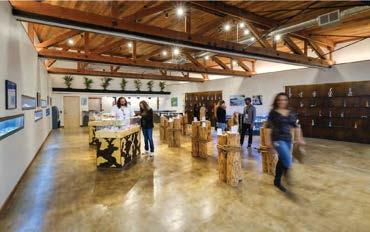














14 edible MONTEREY BAY SPRING 2019 1900 FREMONT BLVD. SEASIDE CA 93955 • 831-900-7333 • OPEN 10AM-10PM DAILY MONTEREYBAYREEF.COM Online Ordering Powered by "I Heart Jane" Featuring CANNABIS PRODUCTS BY CANNABIS PEOPLE MONTEREY BAY'S HOME FOR TRUE 420 CULTURE 3344 Paul Davis Drive, Marina CA • cimacollina.com • (831) 620-0645 @CimaCollinaWine
Marina’s Urban Wine Row, our newest tasting room
urban warehouse experience.
our winery and barrel room,
place for drop-in tastings or private hangouts. Our Marina Tasting Room COMING SOON!
Located in
serves up an
Next door to
this is the perfect
A
WHAT'S IN SEASON BROCCOLI RABE

vegetable with many names, this delicious brassica has found a New World home in the Salinas Valley
BY JAMIE COLLINS PHOTOGRAPHY BY PATRICK TREGENZA
It’s early spring and not many sexy new spring vegetables are on the market tables yet. Now is the time to venture into uncharted territory and experiment with healthy, spiked leaf bunches of broccoli rabe, also known as broccoli raab or rapini. This tasty green, with its tender thin stems, complements rich meats like lamb and pork, adds a mustardy, slightly bitter—yet nutty—punch to carb-laden dishes like polenta and pasta and gives nice flavor and texture when steamed or sautéed and added to sandwiches made on a thick baguette soaked with olive oil and vinegar.
A cruciferous turnip relative, broccoli rabe is also called Italian turnip greens and cima di rapa. In Italian, rape is the name for turnip, and broccoli rabe is a close cousin to the turnip family and tastes similar, as all varieties are a cross of wild mustard and wild Italian turnip varietals. It is commonly marketed as broccoli rabe, a name registered as a trademark in 1964 by the Salinas Valley farming company D’Arrigo Brothers, the largest commercial grower of this vegetable in the country, surpassing 4,000 acres annually. Monterey County is the top broccoli rabe producing county in the nation, and California grows 90% of the crop; in winter the specialty Italian vegetable is grown in the desert of the Imperial Valley.
Broccoli rabe has been grown and eaten by Southern Italians forever, although there is a dispute between Italians and Chinese as to where the plant originated and what it is called. The D’Arrigo brothers, Sicilian immigrants, made it popular when they recognized the plant they were familiar with from their home country growing wild locally in 1927. A few years later they focused on plant breeding, but it wasn’t
until the 1960s that the bitter broccoli relative finally took off, in large part due to Italian immigrants that had moved to cities on the West and East Coasts, making the crop a staple in their kitchen. D’Arrigo Brothers has been the largest grower-shipper of the specialty vegetable ever since and has a patent on the name “Broccoli Rabe,” which is why you may see it labeled as rapini or broccoli raab by small market farmers that use non-patented seed varietals. Asian farmers call it choy sum, or sell the vibrant purple, anthocyanin-rich hon tsai tai—my personal favorite for the amazing color contrast of the bright yellow flower buds and purple stalks.
An interesting fact, not all of the turnip family varietals are grown and used as a healthy cooked vegetable. Turnip or rapeseed has been used as industrial oil, and its byproduct—the meal—is used as a cheap protein source for most all factory farmed animals, second only to soybeans. Rapeseed is naturally high in erucic acid, which can be damaging to cardiac muscles, and it wasn’t until the 1960s that it was bred to be low in this acid and touted as a healthy cooking oil for human consumption, now called canola oil.
Regardless of the lower erucic acid levels, this oil is actually terrible for both the consumer and the environment due to the high amounts of omega-6 fats it contains, along with it being genetically modified to resist the herbicide glyphosate, which leaves a toxic residue on the crop. In order to extract the oil, most processes use solvents, or at the very least heat extraction, which change the chemical makeup of the oil. Recycled rapeseed oil is also used for biodiesel, in my opinion a much better use.
www.ediblemontereybay.com 15
HOW TO PREPARE
Broccoli rabe, the vegetable, is actually quite good for you. It contains cancer fighting sulfur compounds, vitamins A, C, K and potassium. Look for bunches with tender, thin stems and fresh-looking leaves, as they are the least bitter and most tender. The small head that resembles baby broccoli should have tight flower buds not yellow flowers. However, this crop tends to flower easily with warm temperatures. So if the rest of the bunch looks fresh, a few open flowers are fine as they are edible and can make a nice garnish on a salad or be added to a stir fry for an added mustard flavor.
The whole bunch is typically eaten, but I recommend trimming the bottom of the shoots as they have likely dried out. If the stalks are thick, consider peeling off the skin for a more tender vegetable. Often broccoli rabe is blanched in hot salted water for a minute or two before being sautéed in olive oil with garlic and chili pepper, says La Balena owner Emanuele Bartolini, who serves it braised alongside a roast or coated in oil and grilled. My favorite way to eat broccoli rabe is to grind it up as a pesto and put it on a cornmeal crust pizza, sneak it into mac and cheese for a vitamin boost or for breakfast—chop broccoli rabe in bite-sized pieces and sauté in truffle oil or spicy pepper-infused oil, add a poached egg on top and some sunflower or pumpkin seeds. Rapini also lends well to a chopped salad—simply blanch and chop and mix in with crunchy vegetables like cucumbers and shredded carrots. Add some diced red onions, Kalamata olives, sundried tomatoes, capers, juice of Meyer lemons, olive oil, and salt and pepper, to taste. So versatile and so good!
GROWING AND STORING
Local organic farms like Happy Boy and Live Earth grow it and customers love it. Jenn Lynne grew up eating rapini with her Italian family. She’s the wholesale manager of Happy Boy and says they grow it mainly in winter and early spring as the pests—especially lepidopteran worm larvae—like to dine on the leaves when the ground warms up,
causing the vegetable to be undesirable to chefs and market shoppers. One way to manage this organically is to cover the crop with a material called Agribon, which is basically fine-spun polyester that allows in light, water and nutrients but protects the crop from being eaten. Some farmers just prefer to grow it at certain times of the year when the soil is cold and pests are not an issue to avoid the costs of the material and the labor needed to apply and remove it. Bacillus thuringiensis (Bt) is an approved organic, naturally-occurring bacterium that makes protein that is toxic to immature insects like worm larvae and can keep pests at bay with multiple applications.
Broccoli rabe grows from seed to shoot in 45–75 days and prefers cooler temperatures, but not freezing. Commercial growers plant 18 lines of seeds 4 inches apart and ¼-inch deep, and harvest when the crop is 6–8 inches tall before the seed buds begin to open. The seeds are so small it is easy to overplant and it is likely the seedlings will need to be thinned to make space for them to grow. When temperatures get warmer and the day lengths longer, the plant will easily bolt, which means it will elongate and attempt to flower. This makes for a tougher stem, which is undesirable, so keep your eye on your crop. This is one frustrating thing about growing spring broccoli rabe; in my experience it usually flowers before you can sell half the crop!
To harvest, take a knife and cut the stem at ground level. If you are lucky and the weather stays cool, the plant will grow back, giving you two or three harvests from the same planting.
In a home garden you have the benefit of harvesting right before eating. If you do need to store it, rinse, shake off the excess water and put it in a plastic bag in the refrigerator for up to five days.
 Jamie Collins is the owner of Serendipity Farms, which you can find at all of the Santa Cruz Community Farmers’ Markets (downtown, Westside, Live Oak, Felton and Scotts Valley) and at the Pacific Grove farmers’ market on Mondays.
A field of broccoli rabe at Ranch 1 near the D’Arrigo Bros. headquarters in Salinas.
Jamie Collins is the owner of Serendipity Farms, which you can find at all of the Santa Cruz Community Farmers’ Markets (downtown, Westside, Live Oak, Felton and Scotts Valley) and at the Pacific Grove farmers’ market on Mondays.
A field of broccoli rabe at Ranch 1 near the D’Arrigo Bros. headquarters in Salinas.







www.ediblemontereybay.com 17 402 Ingalls Street, Suite 27 Santa Cruz, CA 95060 831.425.4900 | scmbrew.com Buds Beer Bites Visit Our Tasting Studio at the Carmel Crossroads Rooted deep in the legendary Santa Lucia Highlands Small lots that embody the mountainous, maritime terroir Design • Installation • Maintenance Ecological Landscaping Need help with edible landscaping? Call us @ 831.425.3514 www.terranovalandscaping.com ecological landscaping License #656636
Chef Giuseppe Panzuto, owner of Il Tegamino in the charming Court of the Golden Bough in Carmel, grew up in Naples, where a dinner of sausage and broccoli rabe is considered the city’s official dish.



There it is called friarielli. He says that was also his father’s nickname because he was rather short (like the vegetable) and enjoyed growing it in the family garden.
Panzuto says he loves the bitter flavor of broccoli rabe and how nutritious and exciting it is, but his customers don’t appreciate it enough: “I tell them just give up your oldfashioned spinach and kale and their boring taste and try something new.”
CLASSIC ITALIAN SAUSAGE AND BROCCOLI RABE
Courtesy Giuseppe Panzuto, chef-proprietor, Il Tegamino in Carmel
4 Italian sausages
2 bunches broccoli rabe
Red chili pepper flakes, crushed, to taste Pinch salt
Pinch pepper
3 tablespoons olive oil 1 tablespoon minced garlic
Boil water in a medium pot. Blanch the broccoli rabe and set aside.
Heat 1 tablespoon olive oil and pan sear sausages in medium saucepan for 10 minutes. Set aside.
In a separate large pan, heat 2 tablespoons olive oil and cook garlic with red pepper flakes, salt and pepper.
Add broccoli rabe and sausages and cook covered for an additional 10 minutes until sausages are fully cooked and broccoli rabe is tender. Serves 4.
THAI BROCCOLI RABE SOUP
Courtesy Giuseppe Panzuto, chef-proprietor, Il Tegamino in Carmel
4 ounces green curry paste
1 13½ -ounce can coconut milk
2 small chicken breasts
3 cups water
Sea salt, to taste
Cracked black pepper, to taste
1 pound broccoli rabe, chopped
2 cups baby spinach leaves
2 cups cilantro leaves
2 tablespoons palm sugar
1 garlic clove, minced
1 tablespoon olive oil
2 scallions, thinly sliced, for garnish
½ cup shallots, crispy fried, for garnish
½ cup roasted peanuts, chopped, for garnish
Cut the chicken in small-sized cubes and sauté with the olive oil, minced garlic, and pinch of salt and pepper. When the chicken is lightly browned, set aside.
Place curry paste and some of the coconut cream in medium pot over medium heat and cook, stirring for 1 minute or until fragrant. Add remaining coconut milk, water, salt and pepper and bring to a boil.
Add the broccoli rabe to the pot, cover and simmer for 10 minutes until broccoli rabe is tender. Remove from heat and add spinach, half the cilantro and the palm sugar. Using an immersion blender, blend the soup until smooth. Add in cooked chicken and divide among serving bowls.
Top with remaining cilantro, scallions, crispy shallots and chopped peanuts, to taste. Serves 4.
a relaxing dinner at one of The Barnyard’s popular restaurants, recognized regionally for their outstanding menus and superb service
ALLEGRO PIZZERIA
AABHA INDIAN CUISINE LUGANO SWISS BISTRO
ROBATA GRILL & SAKE BAR
SUR
THE NOODLE PALACE
Savor the flavors of international cuisine right in the neighborhood.
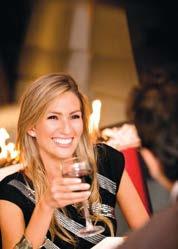
THE BARNYARD SHOPPING VILLAGE
3663 THE BARNYARD, CARMEL RESTAURANT HOURS VARY
WWW.THEBARNYARD.COM
www.ediblemontereybay.com 19
DINING
THE
AT
Enjoy

FRUITS Apricots* • Avocados • Blackberries* • Cactus Pears* • Grapefruit** • Kumquats** • Lemons • Limes** • Mandarins** • Oranges • Pomelos** • Rhubarb** • Strawberries Vegetables Artichokes • Arugula • Asparagus • Beets • Bok Choy • Broccoli • Broccoli Raab • Brussels Sprouts • Burdock • Cabbage • Cardoons • Carrots • Cauliflower • Celeriac*** • Celery*** • Chard • Chicory • Collards • Cress • Dandelion • Endive • Fava Beans and Greens • Fennel • Garlic • Horseradish • Kale • Kohlrabi • Leeks • Mushrooms • Mustard Greens • Nettles • Onions • Orach • Parsnips • Peas** • Pea Shoots • Potatoes • Radishes • Rutabagas** • Shallots • Spinach • Sprouts • Squash • Sunchokes • Turnips * May only ** March and April only ***April and May only Seafood Abalone • Crab, Dungeness • Grenadier, Pacific • Halibut, California* • Lingcod, Pacific • Rock Cod, aka Snapper or Rockfish • Sablefish, aka Black Cod • Salmon, King • Sanddabs, Pacific • Seabass, White • Sole (Dover and Petrale) • Spot Prawns • Squid All fish listed are rated “Best Choice” or “Good Alternative” by the Monterey Bay Aquarium’s Seafood Watch program and are
in abundance
local waters.
LOCAL FOODS IN SEASON
20 edible MONTEREY BAY SPRING 2019
found
in
See www.seafoodwatch.org for more information.
MARCH, APRIL AND MAY



www.ediblemontereybay.com 21 Felton 6240 Highway 9 Boulder Creek 13159 Highway 9 wildrootsmarket.com Saturday April 13 •Demos •fREE sAMPLES •hOURLY RAFFLE PRIZES •dEEP DISCOUNTS IN ALL dEPARTMENTS! •Additional 20% off all Wild Roots Brand Vitamins jOIN US Noon-5P.M. Felton & Boulder Creek 1-DAY ONLY! Anniversary Celebration! Offer Valid 4-1-19 to 4-14-19 Take $5.00 off your next purchase of $30.00 or more! Know Your Know Your Roots Farmer knOw your FooD Open 10-6 Everyday

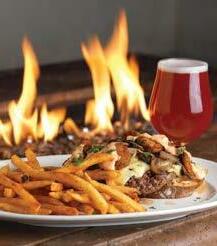
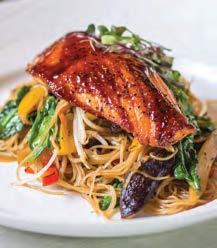
22 edible MONTEREY BAY SPRING 2019 CALIFORNIA CULTURAL CUISINE locally sourced ingredients handcrafted cocktails & award-winning wine list sunday brunch with live music & cocktails prepared table side pet-friendly dining on jacks new terrace (831) 649-7830 | JACKSATPORTOLA.COM (831) 649-2698 | PORTOLAHOTEL.COM LUNCH 11:30AM - 4:00PM | DINNER 4:00PM - 11:00PM SUNDAY BRUNCH 11:30AM - 3:00PM MONTEREY'S ORIGINAL CRAFT BREWERY Award-winning House Brews & Seasonal Ales Brewed On-site | Pet-Friendly Patio | Sports on 18 HDTV’s (831) 649-2699 | PETERBSBREWPUB.COM HAPPY HOUR DAILY 4:00PM-6:30PM LATE NIGHT HAPPY HOUR [SUN-THUR] 9:30PM-10:30PM OPEN DAILY 6:00AM - 11:00AM Made-to-Order Omelets European Breakfast Buffet | Bottomless Mimosas Outdoor Pet-Friendly Dining Available BREAKFAST AND MIMOSAS

www.ediblemontereybay.com 23
24 edible MONTEREY BAY SPRING 2019



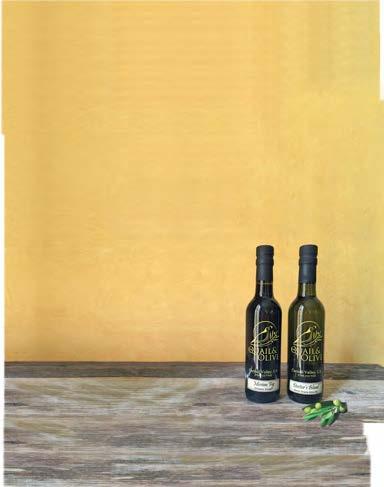










www.ediblemontereybay.com 25 • Parent-Child Classes • A Walk Through the Grades • A Morning in Early Childhood JOIN US for one of these events to learn more about the Santa Cruz Waldorf School: www.santacruzwaldorf.org | (831) 824-2161 Nourish the whole child by cultivating the individual’s capacity of head, heart, and hands. A True California Olive Oil Experience 14 Del Fino Place Carmel Valley Village • Taste California’s Premium Extra Virgin Olive Oils & Specialty Vinegars • Shop our pantry full of locally made goods • Schedule your private tasting seminar 831 659 4288 QuailandOlive.com Let’s Move Courtney Jones is a woman of action. She gets things done in luxury real estate on the Peninsula. And with over 100 homes sold and $175 million plus in sales, she’s moved to the top. So whether you’re looking to sell or buy, wanting to move in or move out, Courtney is your go-to Realtor. Courtney Jones REALTOR® courtneygjones.com 831.233.4839 DRE#01806907
BACK OF THE HOUSE
Pleasure Purveyor
The Monterey Bay area’s most famous chef has been planting the seeds of his first Santa Cruz County restaurant all his life
 BY SARAH WOOD PHOTOGRAPHY BY CRYSTAL BIRNS
BY SARAH WOOD PHOTOGRAPHY BY CRYSTAL BIRNS
It’s a Friday afternoon less than a week before chef David Kinch will take advantage of the annual winter closure of his 3-Michelin-starred Manresa restaurant to fly with his girlfriend and other friends to the Caribbean, and he has been counting down the days until they hit the beach. In a matter of hours, he’ll be greeting guests in Manresa’s dining room, enjoying seeing his life’s work rock their worlds. But right now, his mind and hands are fully absorbed in the pleasure of cooking itself: Kinch is collaborating with some of his team members to make focaccia and pasta in the restaurant’s kitchen. The bread dough has been fermenting for a day before they add fennel seed and wild fennel pollen from Kinch’s own backyard; the pasta is pigeon ravioli.
For Kinch, the projects are part pure pleasure and part research and development for his newest venture, Mentone, a casual restaurant with seriously inspired food slated to open this summer in Aptos. The intent is an accessible homage to both the Italian-French Riviera and California’s Central Coast—an area that 19th century Ligurian fishermen were drawn to because of its similarity to the Riviera’s climate and topography, and one that Kinch has made a career of interpreting, as well as his home.
So these days, Kinch is making pasta every day at Manresa, working on shapes and sauces and getting his chops down. He traveled to Liguria for research in December and was set to return again in March.
“What I’m looking for is that feel, that ambience, that sense that makes a place special and then to interpret it through the lens of the special place that we call home on the Central Coast of California,” Kinch says.
Notably, this will be Kinch’s third new enterprise in five years, following his opening of Manresa Bread’s three outlets and New Orleansinspired The Bywater, all, like Manresa, in Silicon Valley. Meantime, he recovered from two serious restaurant fires, starred in and won an Emmy for the fourth season of The Mind of a Chef, received a third Michelin star for Manresa and was named one of the Top 10 chefs in the world by his 2- and 3-Michelin-starred peers. And Mentone is not even the last or second-to-last project the 57-year-old chef is thinking about.
Where does the drive to achieve all this come from? Ask Kinch and he’ll say he’s not sure, but suspects it’s his curiosity, and the great, obsessive pleasure cooking gives him in slaking that curiosity and providing a way to deliver exceptional pleasure to others. All this is true, but his success has also been fueled by a profound sensitivity and connection to place and a maturity as a chef that has taken him well beyond accomplished cooking to that last stage in a chef’s education—becoming a superlative manager and restaurant entrepreneur.
AN ODYSSEY BEGINS
The son of an engineer with Gulf Oil, Kinch spent his childhood moving “fast and furious” through the Deep South, but he says he didn’t mind the frequent relocations—and that they may in fact have sparked the lust for travel that would become an important source of inspiration and enjoyment for him. Still, he was grateful they ended with a move
from Texas to New Orleans just as he was starting high school.
“New Orleans blew my mind. All of a sudden you’re thrust into this multi-cultured city—the African American experience, the Creole and Caribbean experience,” Kinch says. “New Orleans changed everything for me. It changed me...it changed my outlook on the world. It opened me up to the fact that people are different from me and I loved it.”
An infatuation with music—including jazz, blues and African—first kicked in for him in New Orleans, and the same was true for food.
“What blew my mind was the culture of food: Food was an ingrained part of the pleasure of daily life. They talked about it like I’d never seen anybody talk about food before,” he says. “The food was spicy. The food had personality.”
Kinch started working in restaurants at 15 and got his first kitchen job—in no less than New Orleans’ revered Commander’s Palace— about a year later. He fell hard.
“I found this kind of tribal, subterranean group of people who worked weekends, nights and holidays…And they worked as teams to make people happy,” Kinch says. “I did it for spending money in high school. But once I saw the power that cooking had on me, that was the end of that.”
The power was consuming.
“The more you learn about something, the more interested you become in it. Layers start to unfold,” he says. “And I think that’s how I was about cooking—I fell into a rabbit hole and I’m still in it. I love the physical act of cooking.
“I like the beautiful gestures the hand makes. I like the concentration and the focus. On a personal level I like how it makes all my problems and worries go away. Everything becomes what’s in front of me and what I’m preparing.”
But giving pleasure to others was then and still is key for Kinch.
“I also would be lying to you if I did not tell you that a great part of this obsession has to do with the gratification you get from making people happy,” he adds.
Still, New Orleans’ cuisine was more tradition-bound than it is today and Kinch didn’t want to make gumbo his whole life. Obsessive reading about cooking led him to the great French masters of the day and their legendary rural restaurants, which elevated the ingredients and cusine of the surrounding countryside.
He dreamed of creating a “great American restaurant” that, like his French idols, offered an extraordinary and unique reflection of its particular locale. So after earning a culinary degree at Johnson & Wales University in Rhode Island, he went on the road to train in kitchens in New York, France, Germany, Spain and Japan.
Meanwhile, his parents moved to California, and on visits and while working a harvest at Mount Eden Vineyards, he became intrigued by the ingredients available in California and the different mindset he saw there.
“In California, in a very general sense, it was more about this certain spirit of freedom,” Kinch says, comparing it to New York. “They
www.ediblemontereybay.com 27
“I fell into a rabbit hole and I’m still in it. I love the physical act of cooking.”
weren’t technique driven, but they had all this great product.”
Kinch moved to San Francisco, working at Silks and Ernie’s, with a stint in Europe in between. He also attempted to establish his first restaurant in the city, but after it fell through, he started modestly, opening Sent Sovi in Saratoga in 1995.
Soon after, Kinch moved to Santa Cruz, just over the “hill,” as locals describe the stretch of the Santa Cruz Mountains that separates the coastal city and Silicon Valley.
FINDING HOME ON THE CENTRAL COAST
“It’s a lifestyle choice in a lot of ways. Obviously, the beaches get me outdoors, riding my bike, sailing, surfing, the things I like to do,” Kinch says. “It’s filled with bookstores and movie theaters. I can park my car, I can walk downtown. It’s got a little bit of a funky, bohemian vibe.”
During this time, Kinch also got to know the Central Coast’s incredible bounty of ingredients, and local diners and critics were taking notice. But Sent Sovi’s closet-sized kitchen was an impediment to realizing his dream.
On the advice of The French Laundry’s Thomas Keller, Kinch found a building that he could buy, rather than rent, in nearby Los Ga-
tos, and opened Manresa in 2002.
Kinch has created at Manresa as close to perfect working conditions as he can for himself and the other 14–16 chefs and cooks who execute his vision for the elaborate tasting menus the restaurant serves to 50 diners each night.



Clockwise from right: Kinch relaxing at Café Delmarette; the dish Into the Garden; preparing a course (l-to-r) chef de partie Lucas McMoyler, chef de partie Natalia Lachova, chef de partie Ava Sonleitner, pastry sous chef Courtney Weyl, and chef de cuisine Nicholas Romero; Kinch making ravioli; executive sous chef Matthew Bowden and chef de partie Natalia Lachova at work.
On a tour of the kitchen in January, chef de cuisine Nicholas Romero is keeping an eye on a live stream of guests in the dining room from an iPad to make sure no course is sent out to a diner who is away from the table. Everyone works with focus at stations covered with sound-softening Chilewich matting; the whole scene is remarkably quiet and calm considering that collaboration is the work style and perfection is always the goal.
But perfection it is: a story told in 13 courses with humor and surprises, including some essence of the Central Coast in every dish. (See details of a meal at Manresa on www.ediblemontereybay.com.)
Kinch’s role in all this is to orchestrate, taste and help plate the courses. In collaboration with Romero, the sous chefs and some of the line

28 edible MONTEREY BAY SPRING 2019
cooks, he also develops new dishes, and sees motivating the individual personalities on his team as one of his most important jobs.
As owner, once dinner service starts, he is also out in front, visiting each table and occasionally submitting to selfies or serving finishing sauces, such as the smoky, creamy poblano sauce he spooned over an abalone chowder the night this writer was there.
The front of the house is as important to Kinch as the back—this is fine dining after all, at $275 per seat, and graciousness comes naturally for him.
“It pleases me when people have an exceptional guest experience and they talk about coming back to the restaurant or visiting one of the other restaurants,” Kinch says. “It’s very, very important to me.”
The first year Michelin launched its San Francisco guide, in 2007, it awarded Manresa two stars, even though the location is deep in the South Bay, an honor Manresa held until an arsonist caused more than $2 million
worth of damages, shuttering the restaurant for nearly six months.
“I was very one dimensional, just thinking about the restaurant 24 hours a day, living and breathing the restaurant,” Kinch says of the time before the July 2014 fire. “The restaurant burnt down and I kind of burnt down.”

But what could have been a true disaster became a valuable opportunity: a period of reflection helped Kinch bring more balance into his life and proved a turning point for his business.
“This process of finding balance has made me healthier and in a better place as a person but I think has also made the restaurant much better—I think the restaurant is better than it’s ever been,” Kinch says.
The Michelin inspectors agreed, elevating Manresa from two stars to three, their highest honor, within the year.

The time for reflection also made Kinch realize that he had the bandwidth to explore ideas he had for more casual concepts.

www.ediblemontereybay.com 29
“I’m fascinated by the Mediterranean and the Riviera because they so closely resemble what we have here in California. I’m going to explore that similarity.”
“I realized that if I wanted to do it I could do it, and delegation— finding the right people, finding the right business partner, Avery—allowed me to take the plunge,” he says, referring to Avery Ruzicka, the star Manresa baker who with Kinch in 2015 launched Manresa Bread’s first brick-and-mortar retail outlet, in Los Gatos. The bakery also now offers its naturally leavened sourdough breads, baked with freshly housemilled flours, at locations in Los Altos and Campbell.

Importantly, opening the new businesses allows Kinch to reward senior staff and keep them in the family.
“I have a lot of people, very talented people who have been working for me for a long time,” Kinch says. “At some point there’s a time when I have to decide how I’m going to continue to challenge them or compensate them appropriately, so the best thing I can do is create opportunities for them.”
The Bywater followed in 2016. “What I wanted to do was to open up a place where I felt happy, that brought back great memories, and I kept returning to New Orleans, where I learned about food, where I learned about cooking and I fell in love with this métier that I do,” Kinch says. “Those were simple times but it was also the time that I was the happiest.”
THE FUTURE IS CASUAL
With Mentone, the new restaurant Kinch is opening this summer in Aptos, he is returning to exploring the ingredients of the Central Coast, just as he does at Manresa. But this time, the menu will be more in line with what he cooks at home, the format much more casual and the prices much more accessible. It’s also his first restaurant in Santa Cruz County, where he’s now lived for more than 20 years—longer than anywhere else in his life.
“This is a project from my own heart. It’s also on my side of the hill, so I plan on spending a lot of time there,” says Kinch, who when in Santa Cruz has until now gotten his pizzas at Bantam and his macchiatos at Cafe Delmarette, 11th Hour Coffee or Verve. Birichino, Soif, Mutari, and the Live Oak and Downtown Farmers’ Markets are also spots he likes to support.
“Manresa is very specific. It’s a gastronomic restaurant…it’s an idea factory. But you know nobody eats like that all the time. I don’t eat like that all the time,” Kinch says. “We want people to come to [Mentone] on a Thursday night. We want them to come on a Tuesday night.”
Mentone is the Italian name for the French city of Menton, which sits right on the Riviera’s French-Italian border—a reference to the fact that Mentone’s menu, rather than being strictly Italian or French, will reflect the border-straddling regional cuisine of the Nice to Genoa coastline.
“I’m fascinated by the Mediterranean and the Riviera because they so closely resemble what we have here in California,” Kinch says. “I’m going to explore that similarity.
“It’s going to be fun,” Kinch adds. “There’s going to be a really great pizza oven. We’re going to be doing a lot of pastas. Our king is going to be pesto, the great Ligurian sauce made by hand with a mortar and pestle.”
Kinch’s intent is that the pesto be the best, most classic example of the sauce possible, made only with a mortar and pestle, using the same seven ingredients it is traditionally prepared with—basil, salt, olive oil, pine nuts, parmigiano-reggiano and a Sardinian sheep’s milk cheese.
The hope, he says, is that “a Ligurian person from Genova will taste it and start crying because they think they’re at home.”
30 edible MONTEREY BAY SPRING 2019
Kinch at Home : A new cookbook is on the way
David Kinch’s love of cooking doesn’t stop when he leaves Manresa at the end of the night and luckily for home cooks everywhere, the star chef aims to share the gratification he receives from cooking for those he loves through a new cookbook written with them in mind.
“On my days off, nothing gives me greater pleasure, nothing gives me greater joy, than to continue to cook,” Kinch says. “I do it for my loved ones, I do it for my family and I do it for my friends. And on occasion that means we have a rip-roaring dinner party.”
Kinch’s first cookbook, the best-selling and critically acclaimed Manresa: An Edible Reflection, published in 2013, contains fascinating essays by Kinch and Christine Muhlke about his philosophy and inspirations and ravishing photography by Eric Wolfinger.
But the recipes were designed for producing dishes exactly as they were made at the time by the professional cooks in Manresa’s fine-dining restaurant kitchen—making them a stretch for home cooks.
With the new cookbook, Kinch and his writing partner Devin Fuller, a former Manresa team member and a longtime guest at the dinner parties he throws for his personal friends, are aiming for attainability.
“I want the book to be accessible. I want people to look at the recipes and feel they can do every single one,” Kinch says. “I don’t want it to be daunting, I don’t want it to be challenging and I don’t want it to be overwhelming.”
Still, he doesn’t want to be “patronizing” by suggesting that the recipes, which will include rice dishes and egg dishes that he likes to cook for himself and guests, will be easy or take no time to make.
“Great cooking, like anything worth doing, requires a little bit of effort and a little bit of understanding,” Kinch says. “I want to teach people some basic skills and show them some simple recipes that will stay with them and enrich their lives.” — Sarah Wood
Just as at Manresa Bread, the flours for the pastas and sourdough pizzas will be freshly milled. And like Manresa, Mentone will feature local seafood, likely in dishes like cioppino, a tradition on both the Central Coast and in Liguria.
Before purchasing the property at 174 Aptos Village Way, in the new Aptos Village mixed use development, Kinch and his business partner, Andrew Burnham, had been looking for the right Santa Cruz location for three or four years. They were about to close a deal on a downtown Santa Cruz space when it fell through.
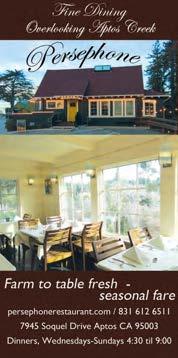
Aside from the exceptional ingredients it offers, and the fact that it’s his home, Kinch sees the Santa Cruz area as an attractive place to open a restaurant because of its sophisticated, well-educated and well-traveled potential customer base. He also believes that Mentone’s healthful Mediterranean cuisine will be particularly attractive to local diners.
Chris Sullivan, a former Manresa assistant manager as well as a manager at both The Bywater and Manresa Bread, will serve as Mentone’s general manager.
So what’s next for Kinch? He says one
dream is that in his retirement, he’ll be back in the kitchen, cooking in his own small restaurant in the Caribbean or the South of France.
For now, he’s writing a cookbook that will share the pleasures he gets from cooking with home cooks (see sidebar above) and he’s still contemplating an idea for downtown Santa Cruz.
“I think that I have one project that’s near and dear to my heart—people who know me really well can figure it out,” Kinch says.
Asked if it would be a music-related venue, he said he could neither confirm nor deny.
But for now, Kinch is very, very happy with the projects he already has going.
“I love what I do. Every day I try to do the best I can—I try to have a positive day and I remain curious,” Kinch says. “So that is why I’m in this rabbit hole. It’s a drive to continue to learn, to be the best I can possibly be, to realize I am not perfect but there is nothing wrong with trying.”
Sarah Wood was the founding editor and publisher of Edible Monterey Bay and now serves as editorat-large and works as a freelance writer and editor.
Highlighting brands that are committed to making a difference environmentally, ethically, and socially.
www.ediblemontereybay.com 31
Ave
Santa Cruz • (831) 423-3349 • 1224 Pacific
Capitola • (831) 476-6109 • 504C Bay Ave
Success Starts With Great Soil
G&B Organics soils and fertilizers are made from high-quality ingredients that are people, pet, and planet safe.







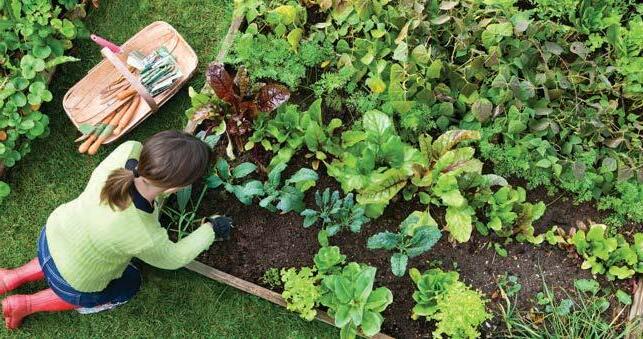

Available ONLY at independent garden centers
Aptos Landscape Supply




5025 Freedom Blvd. Aptos, CA 95003 (831) 688-6211

Del Rey Oaks Gardens 899 Rosita Rd. Del Rey Oaks, CA 93940 (831) 920-1231
Drought Resistant Nursery 850 Park Ave. Monterey, CA 93940 (831) 375-2120
The Garden Company 2218 Mission St. Santa Cruz, CA 95060 (831) 429-8424
Griggs Nursery
9220 Carmel Valley Rd. Carmel, CA 93923 (831) 626-0680
Hidden Gardens Nursery
7765 Soquel Dr. Aptos, CA 95003 (831) 688-7011
Lakeside Nursery
190 Espinosa Rd. Salinas, CA 93907 (831) 632-2100
M. J. Murphy Lumber 10 W. Carmel Valley Rd. Carmel Valley, CA 93924 (831) 659-2291
Martins’ Irrigation
420 Olympia Ave. Seaside, CA 93955 (831) 394-4106
McShane’s Landscape Supply 115 Monterey Salinas Hwy Salinas, CA 93908 (831) 455-1369
Mountain Feed & Farm 9550 Highway 9 Ben Lomond, CA 95005 (831) 336-8876
The Plant Works 7945 Highway 9 Ben Lomond, CA 95005 (831) 336-2212
San Lorenzo Garden Center 235 River St. Santa Cruz , CA 95060 (831) 423-0223
Scarborough Gardens 33 El Pueblo Rd. Scotts Valley, CA 95066 (831) 438-4106
Seaside Garden Center 1177 San Pablo Ave. Seaside, CA 93955 (831) 393-0400
Valley Hills Nursery
7440 Carmel Valley Rd. Carmel, CA 93923 (831) 624-3482
32 edible MONTEREY BAY SPRING 2019
GB-Organics.com
EDIBLE ADVENTURE

Eat the World

A local food writer shares lessons from eating, drinking and fasting in 15 countries in 13 months


 STORY AND PHOTOGRAPHY BY MARK C. ANDERSON
STORY AND PHOTOGRAPHY BY MARK C. ANDERSON
www.ediblemontereybay.com 33
For the past 13 months, I’ve lived in 15 countries. After that, the math gets muddy.
I say that because there’s no real way to count the number of weird foods I’ve tasted, obscure local liquors I’ve sipped or meaningful meals I’ve shared, from Malaysia to Mexico, across five continents.
It’s an inspiring challenge to distill a few lessons from all of my experiences, but the following vignettes from the road represent the type of food and drink revelations that await, if you have the good fortune to find yourself in the neighborhood.
MALAYSIA: FOOD THAT’S READY FOR ITS CLOSE-UP



If there’s one food to symbolize Malaysia’s intriguing and fast-growing capital, Kuala Lumpur, it’s rojak, a spicy, sweet, salty, tangy, soft and crunchy salad of tropical fruits and vegetables with tofu, fried dough and a zingy chili sauce. Just like KL, it’s a crazy, delicious, almost-overwhelming swirl of influences, from Indian to Chinese to Indonesian.
Partly because of these influences, a convincing argument can be made that KL is one of the best cities in the world in which to eat. My local guide there, Mohamed “Rez” Reezan, makes that argument enthusiastically—and after launching 19 startups, he can afford to live anywhere. “I’ve eaten all over the world,” he says. “I decided to retire here because of the food.”
34 edible MONTEREY BAY SPRING 2019
Counter-clockwise from top left: Nasi lemak, Malaysia’s national dish and a ubiquitous presence; the amazing spices of the Marrakech Medina; Dato Ismail, celebrity chef ambassador of Malaysian food; khao soi noodles, the signature (and musttry) dish of Chiang Mai.
He and his team took me all over the city, stopping for barbecued stingray, slippery chee cheong fun rice noodles, prawn mee soup, leaf-wrapped coconut rice with egg (nasi lemak), sardine roti flatbread slathered in curry and spicy sambal, along with bowls of shaved ice with palm sugar syrup, coconut milk, red beans and green rice flour noodles (cendol). We ate our way up the aptly-named Food Street and back, into the Indian Muslim Quarter, the Malay Quarter and Chinatown.
“KL is not just about the diversity or fusion of the food as we traditionally think,” Reezan says. “It is beyond that: It is the be-

ginnings that have never changed, the tastes that take you back.”
One of the country’s celebrity chefs, Ismail Ahmad, is all about taking Malaysians back to their formative foods. He’s making it his life mission to expose the world—through his restaurant, international ambassador trips and TV programs—to unique Malay goodies like beef rendang, a spicy, rich, habit-forming beef stew made with local chiles, garlic, cumin, ginger and coconut milk. “Everybody knows spaghetti; Malaysian kids want spaghetti” he says over lunch of the national food, nasi lemak, and river catfish in fermented durian sauce. “I want to put rendang on the world map, like spaghetti.”
PERU: POTATOES CAN SAVE THE WORLD
In truth, potatoes have already saved the world. Seriously. If it weren’t for the humble spud, you might be reading this in German. Peru is the place to thank. Depending on whom you ask, there are some 2,300–5,000 varieties of potato indigenous to this part of the Andes, ranging from the Peruvian Purple to the hearty Huamantanga.
Potatoes fed the Inca Empire, one of the world’s greatest civilizations, and then Spanish sailors brought them back to Europe. Eventually, the affordable tuber helped the continent survive grain famines, fueled the working classes that powered the Industrial Revolution and helped the Allies nourish the soldiers who would win World War II.
Gracias, Peru, which has been voted the best food country in the world, for its incomparable ceviche, internationally ranked Lima restaurants like Central and Maido and the local delicacy of guinea pig, which I found best prepared on a purple-pink bao bun and topped with seaweed at another stunning world-renowned spot called Astrid & Gastón.
For my sol (the local currency), the best Peruvian dish is the causa, a lasagna-like layered stack of whipped potatoes, seafood and salsas. Lima-born La Mar has become so good at making them that its branches have spread to places like Mexico City, Miami and San Francisco.
www.ediblemontereybay.com 35
Toasties, the surprise habit-forming 7-Eleven staple in Thailand; chee cheong fun, a slippery rice noodle with spicy sauce with which many Malays start their day; and page 37 cendol, a dessert with red beans, sweet corn, crushed ice and green pandan jelly noodles.

THAILAND: 7-ELEVEN FOOD CAN BE A GOOD THING

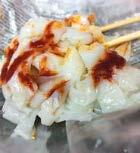
Forget pad thai. Chiang Mai has its own heavenly lineup of signature Thai dishes, including a khao soi yellow egg noodle curry, khanom khrok coconut rice pancakes and som tam green papaya salad. And the unforgettable night markets are simply overflowing with tasty and surprising stuff: ant egg omelets in banana leaves, crab dim sum boiled in the shell, pork balls in spicy fish sauce,
Thai lemongrass-lime-galangal sausage, mini sesame cakes, fried banana flowers and more.
But the biggest revelation of the city isn’t those dishes, or the city’s sheer volume of gorgeous temples. (There are more than 300 temples in Chiang Mai alone, including my favorite, Wat Sri Suphan, which is made completely of silver.) It’s not the chance to hand-feed hippos at the zoo, or play with baby elephants at a sanctuary, or even to hang at The Hedgehog Café, where mango smoothies come with an optional real-live prickly pal in a handy wooden carrier,
equipped with a ramekin of crispy grubs to feed him with tweezers. It’s not the opportunity to climb waterfalls or ride around in the bed of public pickup truck taxis known as “red trucks.”
It’s the fact that the most addictive foodstuffs in the country are served from a microwave at 7-Eleven. They’re called “toasties” and they arrive like a Snackmaster grilled cheese with a range of fillings and breads. I could live off of them if there weren’t so so so many other amazing foods to eat.
36 edible MONTEREY BAY SPRING 2019
MOROCCO: THE BEST ORANGE JUICE ANYWHERE
Between the dancing cobras, brightly colored spices, maze-like Medina marketplace and aggressive restaurant barkers, Marrakech can feel as intense as it is beautiful. Its edge sharpens a little during Ramadan, when observant Muslims don’t eat or drink between dawn and dusk, and understandably get a little grumpy by the afternoon.
For reporting purposes, I’ve tried some ambitious diets in my day, including 10 days of drinking only maple-syrup lemonade for the so-called “master cleanse.” Two days of Ramadan fasting in Morocco felt harder.
Not eating wasn’t as challenging as I thought it would be, but try as I might to keep myself distracted, I couldn’t stop thinking about a little liquid refreshment. At one
point it took maximum willpower not to swallow foam while brushing my teeth; later, I was so eager to sip something, I repeatedly hallucinated hearing the cannons that signal it’s time to break the day’s fast.
Day two, thoughts of OJ consumed me.
A key note there: Moroccan orange juice is delicious. One of the staples of Marrakech’s Jemaa el-Fnaa plaza—along with the monkeys, magicians and musicians—is the juicers.
So when the cannons sounded for real, I already had the juice, pre-poured. I remember OJ as my favorite taste of North Africa, even more than the complex and craveable tagines and the surprisingly tasty sea snails sold in the street. And that OJ hits a whole other level of yum after a day without a drop.
PORTUGAL: ANTHONY BOURDAIN LIVES
It turns out that barnacles, done right, are very tasty. I doubt I would’ve learned that— or had a steak sandwich called a prego for dessert—were it not for the greatest foodand-travel ambassador of our generation. Anthony Bourdain’s blessing sent me to the Marisquería Ramiro in Lisbon, Portugal, for a magic family-style seafood meal of grilled jumbo prawns, fresh oysters, buttery razor clams and freshly cracked stone crab—all ordered by the kilo—next to a big tank where servers fished out lobsters by hand.
Bourdain also inspired pilgrimages to Cowboy Hat Lady in Chiang Mai for pork leg, pitchers of hot sauce and pickled cabbage; Bún Cha Huong Liên in Hanoi for the Obama Special of bun cha noodles and pork, fried seafood rolls and a beer; and Cantina Do Mori in Venice for wine from huge pots and tapa-like cicheti bites.
I was mid-journey when I heard news of his suicide, and like many of his followers, I may never completely heal from it. But also like many, I will perpetuate his legacy by seeking out common ground with oldfriends-I-just-met, the world over.
Bourdain helped enthuse countless individuals about food, and he’s done it while remaining ever vigilant about keeping it in context, channeling the world’s beauty and fragility in ways no one else can.
“Food should be part of the bigger picture,” he said. explorepartsunknown.com.

CZECH REPUBLIC: PRAGUE AND PILSNER
MAKE A BEAUTIFUL PAIR
At my favorite pub in Prague, Lokál U Bílé Kuželky, servers check off the number of beers consumed on a scorecard with little icons of half-liter steins. The card includes…99 icons.
This is on brand for the Czech Republic, where pilsner was born and the per-person intake of beer outpours every other country in the world—and the second-place Germans aren’t really that close.
Some 7 million travelers visit Praha every
www.ediblemontereybay.com 37
Food Street in Kuala Lumpur specializes in pick-your-food-on-astick fried to order.

year, dwarfing its residential population of 1 million. They come for an overwhelming amount of city parks, breathtaking bridges, the romantic Vltava River and some of the coolest cemeteries on Earth. The magic here is real. The rich food, meanwhile, will lay you out, whether it’s the skunky marinated cheese curds or halusky potato dumplings with cabbage, bacon and mustard. But it’s mostly about the beer, in all its hyper-affordable glory.
A scenic 2-hour train ride takes visitors to the city of Pilzen, where Josef Groll crafted the first lager of its kind in 1842. The original recipe remains in use (and closely guarded), with all of its tedious triple decoction and parallel brewing. It’s also the only place to taste unfiltered Pilsner Urquell anywhere, drawn from the huge wooden barrels in the cool depths of the big brewery’s underground labyrinth.
SPAIN: WINE IS SO MUCH MORE THAN RIOJA
Though it is only out-produced by Italy and France—and as its vineyards and winemakers enjoy comparable quality—Spain sells its wines for a fraction of the price, even as Spanish wines enjoy increasing renown.
Two recent visits to Spanish wine country revealed what bargains there are to be found, and a bigger surprise: Even Spaniards themselves automatically think of Spanish wine country as Rioja. But there’s so much more to explore.
A press junket sponsored by the Spanish government in 2017 turned me on to a wonderland of under-rated Catalan wines— cavas to rival Champagne (at half the cost), robust Garnachas, pioneering biodynamic Trepats—plus incredible regional eats like handmade butifarra sausage, ubiquitous garlic-rubbed pan con tomate and grilled bacalao cod.
When I returned the following year to the regions of Ribera del Duero and Rueda, the
discoveries only deepened. Time-honored, family-run operations like Yllera pair outstanding verdejo whites with tours of historic cellar labyrinths deep underground. Bodegas Hijos de Alberto Gutiérrez sunbathes fortified wines in pot-bellied jugs called “dama juanas,” with great results. Destinations like El Lagar de Isilla and Gumiel de Mercado have elevated chef-driven restaurants on property to go with the very worthy wines.
For thrifty travelers, it’s awesome to know magical Iberian Peninsula wine regions await, without the price tag or crowds of more celebrated (and often more cliché) spots, as our tour leader Silvia Hernández points out: “The quality of the region’s grapes and passion of the winemakers make for amazing wines. What makes it even better is that it hasn’t really been discovered by mainstream wine lovers, so the value and access is awesome.” Wine adventurers, take note.
ITALY AND CROATIA: PIZZA GOES BEST BY THE SEA
For traveling food enthusiasts, the bucket list of edible items can stretch like hot mozzarella from a slice of pizza pie—in part because travel reveals so many new items to add to the menu. Classic bucket-listers helped shape my foray into Italy: 1) Spaghetti Bolognese in Bologna, 2) Venetian seafood pasta in Venice and 3) pizza in its Naples birthplace.
The pizza in Napoli was somehow equal to the legend, and includes both what is easily the best margherita pizza these lips have kissed from the place that allegedly started it all (Antica Pizzeria Port’Alba), as well as a fried version of pizza that puffs into a huge ball before deflating into a pocket-like paradise of cheese and meats encased in a thin and chewy crust at Bill Clinton fave Pizzeria di Matteo.
38 edible MONTEREY BAY SPRING 2019
But Croatia might have been the single biggest revelation from my trip, which I don’t say lightly—not just for the islands and the azure Adriatic, but for pizza on par with Italy’s. I heard one traveler call Croatia “Italy light.” I call BS. The pizza is just as good, especially at places like Bokamorra: Pizzaurant & Cocktails, and Merlin Bistro Café & Pizzeria, both in Split. Plus, the old Roman fortresses are incredible. The prices are more affordable. The sailing is world class. And there’s a newer, fresher, more welcoming feel to the tourism industry.
VIETNAM: FOOD HELPS


US HEAL

My year’s arc across this Earth cut through a disproportionate amount of countries still very much defined by relatively recent wars. Memories of the Czech Republic’s Velvet Revolution are still fresh, as are the wounds

from the horrifying conflict between Serbia and Croatia. My favorite food of the odyssey was named in wartime: Peruvian causas were originally made to support “the cause,” a war against Chile. In Medellin, Colombia, local Paisas’ immense pride in their beautiful city is a direct result of how far they’ve built it back up after being the cartel-terrorized murder capital of the world.
Many of these cities and countries are just starting to open their arms to tourists, and are all the more intriguing and welcoming as a result. Medellin’s Comuna 13, an incredible labyrinth of murals and outdoor escalators that for decades was a violent guerilla stronghold, is a prime microcosm of the pattern.
One place Westerners define by war could understandably be the least welcoming to an American. Instead it is the exact opposite. In Northern Vietnam, three different families invited me into their homes to sit on the floor and eat chicken feet, pork trotters, fried spring rolls, peel-and-eat shrimp, wholefried fish and garlicky greens while making homemade rice liquor toasts.
One family was honoring the passing of a patriarch, which included ritual gift giving and burning of fake money at his grave and a massive meal on the living room floor and, yes, a lot of toasts. The family and its guests basked for hours in the food and the glow from the moonshine and the energy of the playful toddlers who ran about. The family didn’t seem sad their loved one’s life was over. They seemed grateful his journey had happened.
Mark C. Anderson is a freelance writer based in Seaside (and in his backpack). Follow him on Twitter and Instagram: @MontereyMCA.

www.ediblemontereybay.com 39 We host a monthly, seasonal family-style dinner for 20 at our communal table and are available for unique private events. AN EVENT BASED COMMERCIAL KITCHEN & DINING SPACE IN SANTA CRUZ BOOK YOUR NEXT EVENT WITH US anepicuriouslifestyle.com 831.588.7772
The author will eat almost anything.
EDIBLE COMMUNITY
HUNGER ON CAMPUS
How universities and colleges around the Monterey Bay are working to address the basic needs of students
BY ELLEN FARMER PHOTOGRAPHY BY DAVID ROYAL
When UC Santa Cruz food systems analyst Tim Galarneau found out that up to 6,000 students on campus were skipping meals because they couldn’t afford food, he set out to do something about it and his pioneering work is having a ripple effect throughout the Monterey Bay area and the nation.

Galarneau—himself a UCSC alum—was alerted to the problem by a study called “Got Food?” which surveyed University of California students on how often they skipped meals because they couldn’t afford the consistent purchase of food on a daily basis due to other costs of attending college. The average was 44% of students skipping meals systemwide, while on some campuses the percentage was as high as 60%.
“If the national average is 14% of people experiencing low and very low food security, and it’s 44% at the UCs, suddenly you have a huge canary,” says Galarneau. “We are now admitting students knowing half of the population is going to bed hungry.”
While the notion of “starving students” is nothing new and scrimping through the college years on cheap meals of ramen or beans is the norm, the current situation is more serious with an out-of-control real estate market and housing costs skewing student budgets.
To address student hunger Galarneau helped initiate a number of projects at UCSC, including encouraging students to apply for assistance, setting up food pantries and opening a “non-transactional” café
40 edible MONTEREY BAY SPRING 2019
where snacks and meals are available for free.
Galarneau has made a career out of challenging the assumptions we make about the food system. Because of his tenacity as the communityengaged education coordinator at the Center for Agroecology and Sustainable Food Systems (CASFS) and his propensity to get everyone involved, he has worked steadily over the past 16 years developing teams to even the playing field at the institutional level. The UC Global Food Initiative to address food insecurity, sustainability and justice launched by UC President Janet Napolitano in 2014 was due, in part, to his efforts. More recently, Galarneau partnered with Ruben Canedo of the Centers for Excellence Equity and Education at UC Berkeley to directly address institutional disconnects in the food system.
Galarneau represented California at a national conference in Philadelphia last fall called “#RealCollege: A National Convening on Food and Housing Insecurity” and was grateful to be able to explain what the state is doing to address basic needs. A few months later, Galarneau took part in a government briefing in Washington, D.C. regarding student access to information about their eligibility for the state food stamp program, which in California is called CalFresh.
“Last year we brought $10 million of CalFresh funding into the UC system from federal funds that do not conflict with financial aid. We can bring over $1–2 million more into our UCSC community that is reinvested into our local food and ag markets,” he says. “Over 6,000 students at UCSC qualify for CalFresh, but we’ve only enrolled 1,100 because they do have to apply.”

STUDENTS HELPING STUDENTS
When Rosalinda Gallegos came to UCSC from a tough neighborhood in Los Angeles as a proud, straight-A junior transfer student and single mother, she was determined to get her degree and make a better life for her son. Unaware that the cost of on-campus family student housing and other expenses might thwart her goals, she did what she’d always done—took on several part-time jobs and kept going. The thought of CalFresh never crossed her mind. She didn’t want to be that customer annoying people in the grocery line while she counted out food stamps for the clerk.

“My first quarter I was tutoring, I was a private investigator, I did contract work translating, I worked as a paralegal. In the winter of my second quarter I was called into the Dean of Students office and offered the job of putting together a resource program for students who could not get their basic needs met,” Gallegos recalls.
Now she supervises more than 20 student ambassadors, each working part-time to help fellow students address basic needs. “And everyone is busy. One person couldn’t do all this work,” she says.
Part of the ambassadors’ responsibility is helping students get over the stigma of applying for what used to be called food stamps. CalFresh, for example, can put almost 200 food dollars in their pockets per month.
“Of the ambassadors we trained, each one who was qualified for CalFresh applied for CalFresh,” she says. “And it was powerful because they took that
Previous page, Tim Galarneau of UC Santa Cruz; top right, Margaret Bishop, co-chair of the Food Systems Working Group.
www.ediblemontereybay.com 41
message and carried it out to their peers. They explained that you just go and swipe your card like a debit card. Nobody pays attention. And you don’t have to pay this money back. It’s yours. When you’re done with school it’s your job to pay it forward—donating to the community, telling other people about your struggles and how you got through.”
Other new programs at UC Santa Cruz include dropping the requirement that dorm residents pay for a full meal plan and providing partial plans. Students can donate extra meals left over on their meal plans through a program called Swipes for Slugs.



A non-transactional café called For the People was recently opened at Cowell College to provide free coffee, tea and day-old pastries gleaned by student workers from other campus coffee shops for the swipe of a stu-
dent I.D. card. Students are also entitled to free nutrient-rich meals procured at cost from local chef Jamie Smith, owner of Foodsmith. Smith’s regular customers are busy high-end families purchasing prepared vegan and paleo meals, so he just makes a few extras. And his devotion to farmto-table cooking fits right in with another service UCSC provides—permanent and pop-up food pantries with produce from the UCSC Farm.
Field manager Kirstin Yogg was able to use money from the UC Global Food Initiative to install hoop houses at the farm in early 2018 and thereby extend the growing season during the winter when students are on campus. New refrigerated coolers were also part of the budget and help keep food pantry items from the farm available longer past harvest season.

42 edible MONTEREY BAY SPRING 2019
Top left, hoop houses at UCSC Farm and students picking up produce, from the campus food pantry and For the People café.
Photo by Jim Clark
“It has been exciting to work with our undergraduate student staff members to build our food security program on campus. Margaret Bishop, for example, acts as a bridge between the farm and what’s happening on campus. She makes food pantry deliveries, collects student feedback and we adjust our crop plans accordingly, when we can,” says Yogg.
Bishop, co-chair of the Food Systems Working Group, expects her pivotal job of helping UCSC become more responsive to student hunger will lead to work in the emerging food justice sector after graduation.

CABRILLO AND CSUMB
At Cabrillo College in Aptos, the realities for many students are stark and personally upsetting, says Robin West, recently appointed as the campus Homeless and Housing Liaison. Of necessity, this job was created at all community college campuses across California this year. West was inspired by Galarneau’s talk in Philadelphia, also attended by Cabrillo president Matthew Wetstein.
“What I created was an information packet of free community resources, including food and housing services available off campus,” she says, pointing to a long list of food pantries and locations of free hot meals around Santa Cruz County.
West—who is developing a program called Cabrillo Cares—knows students who have been completely homeless their entire time at Cabrillo as they prepare to transfer to a state college or university.
“They may live in their car or their van, they might be couch surf-
ing—we get a lot of that—and they have goals and dreams so they’re willing to temporarily be in that position. Once they get their degree, once they get that skill set, they plan to have a job that allows them to have a roof over their head,” she says.
The new Cabrillo Cares resource spots on the Aptos campus and the campus in Watsonville will have grab and go snacks plus hygiene kits. Cabrillo, as well as UCSC, host regular on-campus food pantries supplied by Second Harvest Food Bank.
California State University, Monterey Bay in Seaside also offers twice weekly food pantries supplied by The Food Bank for Monterey County. Otter Eats is another innovative program at CSUMB that invites students to come to the last 20 minutes of campus events, as guests, when there is an excess of food, and consume it there. Students can opt to be notified when there is available food by texting EATS to 76626.
As the state and community college systems across California join the universities in providing basic needs, they cross-pollinate with creative ideas. At UCSC cooking classes have been added through the recreation program so the carrots, potatoes and onions collected from the farm end up in nutritious soups and stews. A Chopped-TV show-type cooking competition is in the works at Cabrillo, where students can enjoy discovering new recipes in a fun atmosphere. Learning to cook nutritious meals is an important part of stretching limited student budgets.
Ellen Farmer is a freelance writer and organizer living in Santa Cruz.
www.ediblemontereybay.com 43
Big Sur | Carmel-by-the-Sea | Carmel Valley | Del Rey Oaks Marina | Monterey | Moss Landing | Pacific Grove | Pebble Beach Salinas | Salinas Valley | Sand City | Seaside Sip and Celebrate, Responsibly. For helpful tips and to learn more please visit SeeMonterey.com/Sustainable Sample a Monterey County wine and you can almost taste the clean air, rich soil and loving care that goes into making each barrel. Take the memories home with you –and a few bottles, too – and protect the natural beauty for generations to come.
EDIBLE GUIDES
FOOD & FARMS
Kids get to have all the fun at these food-focused summer camps
BY AMBER TURPIN
Three months of summer seems luxuriously long when you’re a kid. The days stretch out ahead in a vast calendar of sunny days, fun activities and no classrooms. For parents, summertime speeds by as we continue to march along to the daily grind, but all of a sudden we need to add childcare to the list of things to take care of. Thank goodness we live in a place where an array of high-quality summer camps exists, and we can pick and choose from programs that span many interests and ages. But the camp registration hustle is no joke, and it begins now. So read below for our standouts, and rest assured that the bounty of farm-based, garden-based and kitchen-based camps available here in the Monterey Bay area is at your fingertips.
MEARTH, CARMEL
The Hilton Bialek Habitat in Carmel is a stunning project dedicated to environmental stewardship. What started as an effort in 1995 to preserve a bird habitat on Carmel Unified School District property has since grown into a space complete with an amphitheater, a greenhouse, a pond, native plant and bee gardens, classrooms, a wood-fired pizza oven, an orchard and “The Green Building” with solar power, a rainwater catchment system and kitchen classroom. MEarth is a nonprofit that conducts most of its programming at this amazing location. It also offers five summer day camps: Seedlings, Microgreens, EcoCamp Foodie Fun, EcoCamp Explores and Edible Passport, all designed to uphold a philosophy of hands-on environmental education via nature hikes and exploration, gardening, cooking sessions in the kitchen classroom and an array of creative eco-activities.
LIFE LAB, SANTA CRUZ
Since 1979, Life Lab has been a leader in garden-based education as an independent nonprofit based on the gorgeous UC Santa Cruz farm. It is at the forefront of promoting ecological literacy, which education director Whitney Cohen describes as being “the difference between knowing about something and knowing something.” When children are immersed in the natural world, actually interacting with it, as opposed to hearing a lecture or reading a book, they gain true understanding. Summer camp at Life Lab is infused with the philosophy that the
garden is where learning comes to life. Each session—the popular Garden Sprouts for 4–6 year olds, Wildlands & Watering Cans for 7–11 year olds, OWLS Camp Leadership for 12–14 year olds and the EAGLES Camp Volunteering for 15–18 year olds—is tailored to be developmentally appropriate and led by staff trained to make “every moment a teachable moment,” says garden education director Amy Carlson. “Our programs balance structured, science-based activities with exploration, play and connection with the natural world.” Also, know that the fee for your child to attend this camp is, in part, helping to pay for free and low-cost Life Lab programs in other parts of the community, like cooking and eco-literacy classes in Pajaro Valley schools and after-school programs at Life Lab’s Blooming Classroom in Watsonville.
LIVE EARTH FARM, WATSONVILLE
Off a beautiful country road in the apple orchards of Watsonville sits Live Earth Farm, a fully functioning farm with a robust CSA program and farmers’ market schedule. Farm Discovery at Live Earth is its educational nonprofit, dedicated to empowering “youth and families to build and sustain healthy food, farming, social and natural systems” in a very hands-on way. This year marks the 10th season of summer camps at Farm Discovery, which offer a wide variety of opportunities for all ages to get their hands in the dirt. Little ones ages 3–6 have Sprouts Camp, 6–12 year olds can partake in Art on the Farm and Farm to Table Camps and 11–16 year olds get the Teen Fields & Meals Camp. Leaders in Training & Junior Staff is for ages 14-plus and can fulfill community service requirements. There is an add-on option for Art on the Farm and Farm to Table day camps to have your child stay for the Thursday night pizza-making camp-out and sleepover! No matter the age, all will participate in activities centered on the farm fields and kitchen classroom, with a unique focus on animal care. An emphasis on accessibility and scholarship opportunities makes Live Earth a wonderful option for all.
HAPPY GIRL KITCHEN, PACIFIC GROVE
The three weeks of summer culinary camp at Happy Girl Kitchen in Pacific Grove will provide kids with a deep understanding of some important “Food Rules,” specifically Michael Pollan’s wonderfully eloquent
44 edible MONTEREY BAY SPRING 2019







bullet points that are helpful in guiding us through a not-so-simple subject matter. For example: 1) Avoid food products containing ingredients that no ordinary human would keep in the pantry. 2) Eat wild foods when you can. 3) Do all of your eating at a table.
Co-owner Jordan Champagne describes the weekly sessions, that are always an all-day affair from 9am–4pm: “We start with breakfast and snacks and art. We study Michael Pollan’s “Food Rules” with all of the students and discuss what is real food, healthy food and we ‘grow’ food. We talk about and eat a lot of vegetables and fruits. We bake wholesome foods. We make icings and frosting with all natural food colorings that we make...green from kale and spinach, yellow from turmeric, magenta from hibiscus. We empower the kids to use large chef knives and experiment in the kitchen. We encourage them to play with their food. We visit a local organic farm and milk goats, make ice cream and pick strawberries to make jam with.”
The campers host a “fancy” sit-down dinner for their families, in which they have a hand in every part of the affair, from cooking to baking to serving. “They even provide the entertainment with their own performances of music, dance and comedy. Oh, and of course...we do hula hooping out front of Happy Girl whenever we need a break,” says Champagne.
TEEN KITCHEN PROJECT, APTOS
This extraordinary nonprofit, with its home base in a commercial kitchen in Soquel and a satellite location in Aptos, does some serious work. Every week, teams of teen volunteers gather to cook, pack and deliver nourishing, free meals for cancer patients (38,032 meals total in 2018 to be exact). They also offer a huge variety of weekly Kids Kitchen summer camps geared towards 7–12 year olds, starting June 17 and ending

the week of August 5. The weekly sessions have a thematic structure, such as Around the World in 5 Days, with each day focusing on dishes from a different country like Japan, Peru and Morocco. There is also a Restaurant Week session, in which participants open up the “TKP Café” at lunchtime to serve friends and family. One session called Eat the Rainbow Week is geared to the younger set, ages 5–7. During it, nutrition educator and chef Rebecca Mastoris showcases the health benefits gained from eating foods of all colors of the rainbow and cooks these vibrant foods with the kids.
BLUE ACES BAKE SHOPPE, SALINAS
Helmed by Salinas native and pastry chef Adriana Jimenez, Blue Aces Bake Shoppe in Oldtown Salinas is coming up on its fourth year of offering the community creative, whimsical treats. Last year, a five-part summer baking series for kids took place right there on site, but this season it is looking for a bigger venue to be able to offer a wider range of events and classes. Regardless of where it ends up, referencing last year’s Cupcake Decorating and Piping Skills class for ages 7–13 is enough to know that the 2019 summer curriculum will be just as fun and festive. Icing, buttercream and fondant are just some of the ingredients. All tools and equipment, plus lunch, are provided. But keep in mind that “no snacks will be provided this day because we will be sampling cupcakes all day!” says Jimenez, “This class is for kids only. Sorry parents, we get to have all the fun.” Blue Aces also offers private kids classes for groups of eight or more.
Amber Turpin is a freelance food and travel writer based in the Santa Cruz Mountains.
46 edible MONTEREY BAY SPRING 2019

www.ediblemontereybay.com 47
Best Butcher Shop – Santa Cruz Sentinel
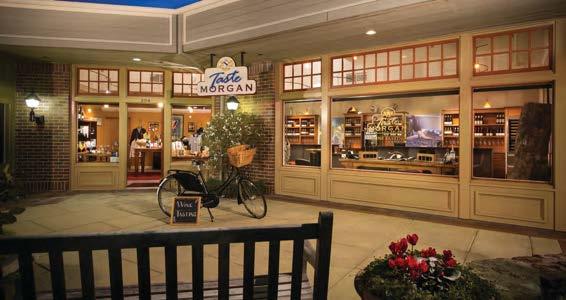





























48 edible MONTEREY BAY SPRING 2019 Open
- 6:00 pm daily Located in the
Rio
at Highway
831.626.3700 morganwinery.com
11:00
Crossroads, Carmel
Road
One
EDIBLE D.I.Y.
FEATHERED FLOCK
From coop to soup, the joys of raising backyard chickens
 BY JESSICA TUNIS PHOTOGRAPHY BY CRYSTAL BIRNS
BY JESSICA TUNIS PHOTOGRAPHY BY CRYSTAL BIRNS
www.ediblemontereybay.com 49
The chickens cluck and chuckle to themselves in the slanting afternoon light, scratching for bugs and seed with their fat feathered legs in the grassy backyard. They aren’t startled by our presence, as they know us well enough.

Chickens are smarter than people give them credit for. They can recognize up to 40 individuals and are especially fond of those who bring them food every day. They greet us with the calm, contented chortles of tame birds, as the kids toss them handfuls of scratch. The flock I visited with my daughter for this story was a mixture of fancy breeds with intricate plumage, and backyard mutts whose broody mothers laid a clutch of eggs in secret, hiding them from gatherers only to re-emerge weeks later with a dozen tiny chicks in tow.
If you’ve ever seen a supermarket egg cracked in a pan beside a home-raised egg, the pallid yellow yolk next to a rich gold one, you may have been shocked at the difference and decided right then and there to have your own chickens. Even birds raised on conventional pellet feed in a backyard will have eggs with noticeably stronger shells and darker yolks than those from a supermarket—this translates directly into increased nutrition. When building a flock, consider your family’s egg consumption, and whether you’ll want to trade eggs with neighbors and friends. A family of four, consuming two eggs per person per day, would want a dozen young laying hens. That average,
two eggs per day per three layers, is a good starting point, but be aware that actual egg production will fluctuate with seasons, breed and age of the flock. In winter, egg production drops dramatically, though some breeds lay through the winter more reliably. As the birds age, they lay less each year; though they may live for eight years in a cozy henhouse, their peak laying is limited to their first two years. If you don’t want to continue feeding a bird past its laying prime, a dual-purpose bird, bred for both egg production and meat, is a good compromise. (See sidebar for best varieties.)
“Chickens are one of the few projects that we break even on,” says backyard farmer Tom Boland, who raises sheep, goats, pigs, chickens, geese and ducks in Boulder Creek. “In summer, when they’re laying at their peak, we even get a little ahead. In winter, it’s about waiting for egg production to ramp up again.” His family sells extra eggs to friends and neighbors to cover feed costs, but it’s hard to quantify the value, in this afternoon light, as the children take their favorite chickens onto the swing, of the connections being forged. These girls will grow up knowing about life and death, responsibility and respect. They already know how to scramble an egg in butter, how to set aside bones to make broth, and how to lift the fluffy chicks gently, tenderly, from the nest, and show them the green world outside.
My daughter likes to crawl into the nesting boxes from the
50 edible MONTEREY BAY SPRING 2019




What breed to choose?
If you dream of a connection to the food chain right in your own backyard, gathering eggs still warm from the nest, watching a flock of chickens peck and scratch in the garden, or even of raising your own birds for meat and bone broth—here are some varieties to consider.

Dual-purpose birds, like Orpingtons and Marans, Wyandottes, Delawares, and Rhode Island Reds were the historical choice of the backyard farm flock. They are reliable layers, though not quite as prolific as the egg-specific breeds, and they grow to a good size worth harvesting for the table. Egg-specific breeds like Leghorns, Welsummers, and Hamburgs favor egg production over making muscle and meat on their slender frames. They begin laying earlier than other birds, at about five months of age, and are often more skittish and nervous than dual-purpose birds. While this type most-
ly lay white-shelled eggs, the Ameraucana, also known as Easter Eggers, lay colorful eggs ranging from pale pink and olive to pale blue and light green. In fact, Martha Stewart has a paint line based on the colors of her Ameraucana eggs.
The meat birds best suited for a backyard flock are older breeds: the Brahma, Turken, and Cornish Game. These birds are large and meaty. Some, like the Dark Cornish, are even decent layers. Modern poultry farms use huge white birds known as “broilers,” which grow so fast and so unevenly that they often are unable to walk after a few months of life. Unsurprisingly, they also tend not to be very good foragers. These broiler birds, available as Cornish Cross, are an efficient choice for those who are certain they will harvest them on schedule. But if you’re at all squeamish at the prospect of killing your own birds, it’s best not to start with this breed, as you’ll soon run into problems past the age of harvest.
chicken entrance, eschewing the main door that makes egg collecting easier for adults. She gathers eggs still warm from the nest as though it were Easter. We’ve struggled and learned a lot about coop design over the years; birds require good ventilation, nesting boxes, roosts to perch on and protection from excess heat and cold. A covered outdoor area is ideal, too, so that birds can spend time outside even in the rain.
Rodents have been our worst problem in the henhouse, stealing both eggs and chicken food. A rodent-proof enclosure saves dollars and stress, as well as keeping out other potential pests like skunks, raccoons, and even hawks and owls. Rodents burrow as well as climb, so a truly secure enclosure will have gopher wire or hardware cloth lining the bottom, and chicken or aviary wire over the top. Pay special attention to corners, grade changes and seams where wire meets to ensure the best protection, and be aware that those little buggers will eventually gnaw through even thick-gauge wire.
Some coop designs provide a minimum of protection and allow the birds to forage freely outside during the day. Chickens will naturally put themselves to bed just before dusk each night. Other coop designs will keep the birds enclosed in a single area, ideally with some dirt to scratch in. The regular addition of fresh grass, vegetable scraps and dry bedding material such as rice hulls, hay or wood chips will enhance their environment and health.
Chickens are proficient foragers that will eat anything from bugs and worms, to seeds, grains, fresh greens and kitchen scraps. The more varied their diet, the healthier they will






be. Baby chicks will need a finely milled feed specific to the nutritional needs of young birds. They can transition to larger pelletized adult feeds at 18 weeks old. Chickens raised for meat will do best on a grower feed, while egg layers require a layer mix. The true D.I.Y. chicken-keeper can also formulate feeds by hand from whole and sprouted grains. This approach, while more labor intensive and requiring a larger initial investment, usually provides better quality nutrition than the pelletized feeds.

With our first flock, we tried to outsmart our natural tendency to become attached to individual birds—the layers were a mix of breeds, but the dozen meat birds were all Dark Cornish hens. We thought that in this way we’d be able to harvest them more easily when the time came, but it was not to be. The birds all had subtly different feather patterns, personalities and habits, and defied our attempts to remove ourselves from the process. Killing is not pleasant work, but for someone who eats meat, it completes the circle of life in a way that feels right, somehow. The act of butchery can be a way to connect with the food chain, with our shared animal heritage and mortality. The birds we killed had names by the end, and in retrospect, I think it was better that way. When we pull a package labeled Bardo from the freezer, we remember the hen with barred black-and-white feathers and a crooked beak, and give thanks to her specifically, all over again.
Jessica Tunis raised her first chicken from an egg in elementary school and never looked back. She lives, writes and tends a homestead in the Santa Cruz Mountains.


www.ediblemontereybay.com 53 MIJO'S TAQUERIA CAPITOLA VILLAGE, CA 831.465.0228 BOLD AND UNIQUE FLAVORS IN A NEW AGE TAQUERIA SETTING
Chickens are proficient foragers that will eat anything from bugs and worms, to seeds, grains, fresh greens and kitchen scraps. The more varied their diet, the healthier they will be.
BEET DEVILED EGGS
Courtesy Jessica Tunis
These ravishing beauties are worth the effort. While deviled eggs have long been a staple of the season, these bright snacks are something special, with an added piquancy from the vinegar, balanced by mild sweetness and salt from the brine. And the color! A deep, rich magenta, that does not impart any beet flavor to the eggs.
Play with the infusion times; even 2 hours will give a lovely pink color to the outside of the egg, but a bit more time will allow that luscious color to bleed slowly into the center of the egg, like a drop of watercolor paint that spreads gracefully across a page. An overnight infusion will give you color all the way to the yolk; a two-day soak will yield the sharpest pickle flavor.
12 hard-boiled eggs, peeled
For the pickled beet marinade: 2 pounds fresh beets 2 cups vinegar; red wine, white, champagne or apple cider all work well 2½ cups water 1/3 cup sugar
1 tablespoon salt
For the filling: 3 tablespoons mayonnaise 3 tablespoons sour cream 1 tablespoon prepared mustard Pinch salt and freshly ground pepper, to taste
Hard boil the eggs. Tip: Jostle the eggs now and then as you are cooking them, so that the yolks do not settle to one side or another, but rest in the center of the egg. Choose eggs that are at least 3 days old for the easiest peeling. Peel the eggs under running water, and refrigerate until ready to use.
Peel the beets and slice them in ¼-inch slices, then quarter the slices. Red beets give the brightest color; yellow beets make a soft golden hue that is less intense. If you’re aiming for a brighter gold, add a 1-inch piece of fresh turmeric, grated, to a golden beet mixture.
In a medium saucepan, pour the water and vinegar over the beets. Add sugar and salt. Bring to a boil, stirring to dissolve sugar, then simmer over medium heat for 30 minutes or until beets are tender.
Remove the beets from heat and allow to cool. Remove the pickled beets from the liquid; they will have lost some of their color, but can be used in salads.
When the beet liquid has cooled, place the eggs in a large container, and pour the beet liquid over them. Allow the beets to infuse in this liquid in the refrigerator for at least 2 hours, and up to 2 days. A 2-hour infusion will stain the outsides but not the insides of the beet; 2 days will turn even the yolks pinkish. A happy medium is about 6 hours, where the centers and yolks are still their natural color.
Remove the eggs from the beet brine. Slice the eggs in half lengthwise, and gently pop the yolks out of the middle, into a small mixing bowl. Add the mayonnaise, sour cream, mustard, salt and black pepper, and mash the mixture with a fork until it acquires a creamy consistency. Scoop the filling into the center of each egg, mounding it up.
Prepare toppings to garnish the top of each egg; this is where to get truly creative. We used capers, finely chopped snow peas, calendula and borage blossoms, chopped red pepper, chives, parsley, smoked paprika and dill; just one or two of these ingredients per egg is ideal. But there are so many other beautiful topping options. Consider cucumber, zucchini or pepper relish, smoked salmon, bacon bits or black olives, just to name a few.
Arrange the stuffed eggs on a platter with other seasonal finger foods, such as carrots, radishes and snap peas. Enjoy!
Reprinted with permission from Mountain Feed. Visit the EMB website to see our recipe for Savory Chicken Bone Broth.

54 edible MONTEREY BAY SPRING 2019
Photo by Jessica Tunis






www.ediblemontereybay.com 55 OPEN 7 DAYS A WEEK · 10 AM -7 PM IG SUR CANNA + BOTANICALS is a high end cannabis retail store which prides itself on the quality of their products and service, combining an educational approach to cannabis use with personalized customer service. 26352 Carmel Rancho Lane Carmel, CA 831.250.7756 BIGSURCANNABOTANICALS.COM OCEAN TO TABLE· 100% LOCAL & ORGANIC LUNCH FRI-TUES 11:30-2:30 · DINNER DAILY 5PM WWW.WILD-FISH.COM · 831.373.8523 · WILDFISHPG@GMAIL.COM

APTOS
Persephone 7945 Soquel Drive 831.612.6511 • www.persephonerestaurant.com
With a namesake like the mythic Persephone, this restaurant in Aptos proclaims its deep reverence for seasonal cooking. Themes central to harvest, winter and spring are core to Persephone’s story, and are reflected in the changing menu at this fine dining destination, where chef Cori Goudge-Ayer presents inventive, ingredient-driven creations. The restaurant is a family-run passion project, bringing together parents, siblings and a long history of culinary arts in a beautifully redesigned space overlooking Aptos Creek. Open W–Su 4:30–9pm.
BIG SUR
Sierra Mar at Post Ranch Inn 47900 Highway 1 831.667.2800 • www.postranchinn.com

Executive chef Elizabeth Murray uses exceptional ingredients, many grown on site, to deliver a unique gastronomic take on the Big Sur experience. Lunch offers a 3-course prix fixe menu, while dinner features a 4-course prix fixe menu. Choose from almost 3,000 different wines from the Wine Spectator Grand Award-winning wine list. Arrive before sunset for breathtaking views from this iconic restaurant’s floor-to-ceiling windows and cliffside terrace. Open daily for lunch noon–2:30pm, dinner 5:30–9pm. Advanced reservations required. Please note that dinner guests will not be admitted before 5pm.
Dine Local GUIDE
All of these restaurants emphasize local ingredients, and they also advertise in Edible Monterey Bay! Stop by for a free issue, and tell them that we sent you!


CAPITOLA
East End Gastropub

1501 41st Avenue 831.475.8010 • www.eastendpub.com
East End Gastropub is the newer baby sister to the popular West End Tap & Kitchen, but aside from sharing owners and chefs, East End’s beautiful, recently renovated modern interior is entirely different from West End and offers its own robust, sophisticated, beer-friendly menu. Chef Geoffrey Hargrave has created dishes that are familiar yet innovative, such as crispy gigante beans with smoked creme fraiche and coq au vin. Share plates, pizzas and salads come in generous portions for a familystyle meal. The restaurant also offers its own brews, along with local rotating taps and a strong wine list. Open Su 10:30am–9:30pm, Sa 10:30am–10pm, M–Th 4–9:30pm, F 11:30am–10pm. Brunch Sa–Su 10:30am–2:30pm. Happy hour M–F 4–6pm.
Mijo’s Taqueria
200 Monterey Avenue, Suite 2 831.465.0228 • www.mijostaqueria.com
Serving the local community and visitors alike in Capitola Village, Mijo’s Taqueria features bold and unique flavors in a new age taqueria setting. Chef Anthony Guajardo’s passion for cooking developed from being in his Mexican and Italian grandmothers’ kitchens growing up. Eager to combine his authentic family recipes with a modern culinary twist, he opened Mijo’s, conveniently located just a quick walk from the beach and available for dining in or ordering to go. Open M, F, Sa 11am–7:30pm, Tu–Th 11am–6pm, Su 11am–7pm.

www.ediblemontereybay.com 57
The popular Beet and Brie Burger with cilantro mint chutney at The Cremer House in Felton.
Photo by Coline LeConte
The Penny Ice Creamery


820 41st Avenue 831.204.2523 • www.thepennyicecreamery.com

Open Su–Th noon–9pm, F–Sa noon–10pm See The Penny description under Santa Cruz for more.

Shadowbrook

1750 Wharf Road 831.475.1511 • www.shadowbrook-capitola.com A Santa Cruz County landmark since 1947, the worldfamous Shadowbrook continues to be an overwhelming favorite with locals and visitors alike. Its fine food, extensive wine list and unparalleled setting and ambiance have earned it numerous awards, including Northern California’s “Most Romantic Restaurant” and “Best Date Night Restaurant.” Gift cards and reservations available online. Open M–F 5–8:45pm, Sa 4:30–9:45pm, Su 4:30–8:45pm.
CARMEL
Aabha Indian Cuisine

3690 The Barnyard 831.250.5940 • www.aabhaindian.com
For authentic Indian food in Carmel, look no further than Aabha Indian Cuisine, which offers lunch and dinner daily at The Barnyard. Master chef Bhupender Singh has more than two decades of experience in creating tantalizing dishes, with expertise in balancing spices and complex flavors. Chef Singh began his career working at Bukhara restaurant in New Delhi, one of the 50 top restaurants in the world, later opening popular restaurants in the Bay Area and Sonoma. Open daily for lunch buffet 11:30am–2:30pm, dinner 5–9pm.
Allegro Pizzeria


South West corner of The Barnyard 831.626.5454
Carmel’s neighborhood pizzeria for over 30 years, Allegro features eclectic award-winning pizza, as well as traditional Italian fare. With private dining rooms and patios, Allegro is a great spot for any event with complete meals to match any budget. Featuring pizza, pasta, seafood & steak as well as an array of new pub fare inspired by the on-site raft brewery. Kids make their own pizza, puppies eat free and gluten free, vegan & keto choices are available. Yes, we deliver! Open M–Th 11:30am–8:30pm, F–Sa 11:30am–9:30pm, Su 11:30–9pm.
Aubergine


Monte Verde Street at Seventh Avenue 831.624.8578 • www.auberginecarmel.com
Located within the romantic L’Auberge Carmel, a visit to Aubergine feels like a trip to Europe. Executive chef Justin Cogley was named one of Food & Wine’s best new chefs of 2013. He has been nominated multiple times for a James Beard award and it’s no wonder—he’s an eloquent and imaginative interpreter of fine seasonal ingredients. Executive pastry chef Yulanda Santos delights with stunning and inventive desserts. Open daily 6–9:30pm.

Basil Seasonal Dining
San Carlos street between Ocean and Seventh avenues (Paseo Courtyard) 831.626.8226 • www.basilcarmel.com “Organic, local and seasonal” are not just buzzwords at Basil. This cozy restaurant in the Paseo Courtyard was awarded three stars from the national Green Restaurant Association. Owner Denis Boaro continues to provide a full bar and great selection of California and Italian

58 edible MONTEREY BAY SPRING 2019
wines, including Old and New World. Check website for information on monthly winemaker dinners and other events. Many vegan and vegetarian entrées available. Heated, dog-friendly outdoor seating. Open daily for lunch and dinner from 11:30am, Sa–Su brunch 11am–2pm.
Billy Quon’s SUR
3601 The Barnyard, Suite A-21 831.250.7188 • www.surcarmel.com


SUR is the latest restaurant for Bill and Teresa Lee, who over the years have created local favorites like Bahama Billy’s and Bixby Bistro at The Barnyard. Executive chef Herman Hernandez gets rave reviews for an exciting and eclectic menu. Favorites include his famous Southern fried chicken and waffles, fisherman’s bouillabaisse, filet mignon, burgers and a variety of vegetarian dishes. SUR has a full bar and holds two happy hours nightly, from 3 –6pm and 8–9pm, plus happy hour all night every Tuesday. A wide selection of local wines is available. SUR has a special doggie menu for canine patrons! Open Tu–Su 11:30am–9pm, all-day menu served continuously.

Covey Breakfast Restaurant

8000 Valley Greens Drive 831.620.8910 • www.quaillodge.com Overlooking a pond and manicured grounds, the newly remodeled Covey Breakfast Restaurant includes motorcycles from the Moto Talbott Museum in Carmel Valley in a nod to Quail’s annual motorsports event, while chef Brian Kearns captures the essence of a home-cooked Carmel Valley meal. The weekday à la carte menu includes nourishing skillets, eggs benedict and huevos rancheros; on weekends, enjoy an enhanced American breakfast buffet. Both indoor and outdoor seating come with beautiful views. Open daily 6:30–11am.
Earthbound Farm’s Farm Stand Organic Kitchen

7250 Carmel Valley Road 831.625.6219 • www.earthboundfarm.com

At its newly renovated Carmel Valley Farm Stand, Earthbound Farm’s 100% certified organic kitchen delights with housemade soups, sandwiches, a newly expanded salad bar, baked goods and fresh juices and smoothies. Food is available to be enjoyed on our beautiful grounds or for takeaway. Experience picturesque Carmel Valley as you stroll through Earthbound’s organic gardens and learn about its pioneering local heritage and commitment to organic integrity. And as always, pick up some fresh, local organic fruits and veggies. Visit our website or check out Facebook for hours, special events and classes!
Edgar’s at Quail
8000 Valley Greens Drive 831.620.8910 • www.quaillodge.com
Taste the fresh ingredients harvested from local organic farms that are hand selected by Edgar’s executive chef Brian Kearns and exquisitely prepared by his culinary team into the savory dishes available on its new menus. Set in the clubhouse of Quail Lodge & Golf Club, Edgar’s restaurant and bar features a casual elegance with its indoor and outdoor fireside dining located alongside the natural backdrop of the golf course and Santa Lucia Mountains.
Edgar’s at Quail is proudly guided in the principles of sustainability by the Monterey Bay Aquarium Seafood Watch and focuses on local farm-to-table options. Open daily 11am–9pm.



www.ediblemontereybay.com 59
Enjoy family.

États-Unis French-American Bistro

Dolores Street between Fifth and Sixth avenues 831.238.6010 • www.etatsuniscarmel.com
French comfort food made with locally sourced organic ingredients is a winning combination for États-Unis, helmed by award-winning chef Soerke Peters. The cozy, casual restaurant in downtown Carmel-by-the-Sea features favorites like quiche Lorraine, sweet or savory crêpes, escargot, bouillabaisse and beef cheek bourguignon, as well as housemade pâtés, charcuterie and hearty hors d’oeuvres, perfect for enjoying with a glass of wine. Open daily 7am–3pm, Th–Su 5–9pm.
From Scratch Restaurant

3626 The Barnyard 831.625.2448 • www.fromscratchrestaurant.com
When a restaurant is called From Scratch, customers expect a meal prepared with the freshest ingredients and cooked to perfection. That’s exactly what you get when you dine at this charming family-owned spot. Breakfast is served all day, featuring hometown favorites such as eggs Benedict, made-to-order omelets, French toast made with homemade cinnamon bread and huevos rancheros. A variety of lunch specials is available, including soups, salads and sandwiches. A pet-friendly patio welcomes those who come in with furry friends. Open daily 8am–2:30pm. Lunch served starting at 11am.
Il Grillo
Mission Street between Fourth and Fifth avenues 831.238.9608 • www.ilgrillocarmel.com

A more casual yet equally outstanding sister to Carmel’s La Balena, Il Grillo is staking out its own creative culinary personality with the addition of longtime local chef Brandon Miller. Homemade desserts are by Emily Garcia. Both Miller and Garcia share a wealth of local food knowledge and traditions shine through their cooking. Dinner menus are driven by local and sustainably raised ingredients, with beautiful and delicious results. Garden seating available. Open M–Sa 4–9pm.
La Balena

Junipero Street between Fifth and Sixth avenues 831.250.6295 • www.labalenacarmel.com
Winner of EMB’s 2014 Local Heroes award for Best Chef/ Best Restaurant, La Balena has a seasonal menu that changes daily but always expresses an inventive take on the rustic food of a Tuscan trattoria. The outstanding culinary team sources ingredients from local organic farms and prepares the restaurant’s pastas and slow-cooked meats from scratch daily. Owners Anna and Emanuele Bartolini have created an excellent Italian wine list and a warm, inviting atmosphere, complete with back garden seating. Open Tu-Su 11:30am-3:30pm, 5-10pm.
Lafayette Bakery & Café

3659 The Barnyard, Suite E-22 831.915.6286
Whether it’s a rustic loaf of bread or a delectable French pastry, you’ll find what you’re looking for at award-winning Lafayette Bakery & Café, a favorite stop for both locals and visitors to The Barnyard. Master baker Jean-Bernard Vial and the rest of the Vial family bring their French heritage to their authentic artisan breads and handcrafted pastries such as custard brioche and almond croissants. Coffee, baguette sandwiches and salads are also served with a smile. Open M–Sa 7am–6pm, Su 7am–4pm.
TASTING ROOM-SAN CARLOS & 7TH, CARMEL-BY-THE-SEA FAMILY-OWNED & ESTATE GROWN SINCE 1972 • SCHEIDFAMILYWINES.COM
KURT GOLLNICK – COO, TYLER SCHEID – PROJECT MANAGER, SCOTT SCHEID – CEO, HEIDI SCHEID – SR. VICE PRESIDENT, AL SCHEID – CHAIRMAN, FOUNDER
60 edible MONTEREY BAY SPRING 2019
Robata Grill & Sake Bar
3658 The Barnyard, Lower Level 831.624.2643 • www.robata-barnyard.com
Robata Grill & Sake Bar in The Barnyard has been a locals’ favorite for more than three decades, providing traditional Japanese cuisine and a sushi bar. The perfect place for any occasion, the restaurant features a full bar and wine list as well as a good selection of sake and Japanese beer. Robata welcomes private parties and offers catering as well. Open M–Sa, lunch 11:30am–1:30pm, dinner at 5pm.
Stationaery
San Carlos Square between San Carlos and Mission info@thestationaery.com • www.thestationaery.com This cozy neighborhood restaurant and coffee bar, operated by Anthony and Alissa Carnazzo, uses ingredients from local farms and ranches to create breakfast and lunch items with comforting flavors and elegant presentation. Indoor and outdoor seating available with a pet-friendly patio. M–F 8am–2pm, Sa-Su 8am–3pm; check website for special evening events.
Waypoint Bar & Deck
8205 Valley Greens Drive 831.620.8910 • www.quaillodge.com Locals and visitors alike have an exciting and beautiful new spot to stop for a whiskey flight, local craft beer, creative cocktails, wines by the glass or bottle, and contemporary small bites and appetizers made with local, sustainable ingredients. The new Waypoint Bar & Deck offers monthly chef specials like “Bubbles & Birdies” (fried chicken and Champagne) and a tantalizing regular menu featuring such items as chef Brian Kearns’ beef Shortrib Nachos with Charred Avocado, Roasted Heirloom Carrots, burgers, flatbreads and duck fat fries. Also available for private events, rental fees apply. Open W–Su 5–10pm.
CARMEL VALLEY
Jerome’s Carmel Valley Market
2 Chambers Lane 831.659.2472 • www.jeromescarmelvalleymarket.com Already known for its specialty groceries, meats and fresh local produce, this beloved market is now serving classically French-trained chef Jerome Viel’s delicious hot prepared foods, sandwiches and mostly organic salad bar for eating at comfortable outdoor seating or takeaway. The offerings start with breakfast burritos, croissants and other French pastries in the morning, followed by favorites such as coq au vin, spaghetti carbonara and chicken enchiladas for lunch. On Friday afternoon, the big paella pan appears just in time to take some home for dinner. Open M–Sa 7am–7pm, Su 7am–6pm.
Lucia Restaurant & Bar

Bernardus Lodge & Spa • 415 W. Carmel Valley Road 831.658.3400 • www.bernarduslodge.com

Indulge in artisanal California country cuisine, awardwinning wines and an expansive heated outdoor terrace with the finest restaurant view in Carmel Valley. Named for the Santa Lucia mountain range and wine appellation that beckons to the south, renowned chef Cal Stamenov serves both his signature tasting menu and dishes à la carte. Wine list is equally notable. A private chef’s table and wine cellar are also available. Enjoy live music Monday, Tuesday, Friday and Saturday evenings and at Saturday and Sunday brunch. Open daily 7am–10pm.
Sri Lankan Organic Restaurant
Fresh, Local, Organic Ayurvedic Healing Food


736 Water Street Midtown Santa Cruz 831.457.2350


OF THE OCEAN

www.ediblemontereybay.com 61
PEARL
Award Winning Chef Ayoma Wilen Best Chef America 2013 Ayoma’s specially crafted White & Red Pearl Wines Work Party Catering
Trailside Café and Beer Garden

3 Del Fino Place 831.298.7453 • www.trailsidecafecv.com
Those needing to refuel after a day on the trail can head to Trailside Café for home-cooked meals in Carmel Valley. Beer lovers get to choose from 50+ draft and bottle choices, and sports fans can watch games on the HDTVs. Locals are treated to specials on Mondays and Tuesdays. On the weekends enjoy live music in the beer garden. Check out the calendar on its website for more details. Dog friendly in outdoor areas. Open daily 8am–9pm.
DAVENPORT
Whale City Bakery

490 Highway 1 831.423.9009 • www.whalecitybakery.com
Davenport’s artistic charm and oceanside location make it hard not to slow when you pass through on Highway 1. Those in the know always stop at the historic Whale City Bakery. The bakery tempts with housemade breads, pastries, muffins and pies—and that’s only the beginning!
Whale City also offers a full restaurant that serves up comfort classics and other hearty dishes. The bar and live music every Thursday attract a loyal local following. Open daily 6:30am–8pm.


FELTON
The Cremer House

6256 Highway 9 831.335.3976 • www.cremerhouse.com Housed in the oldest building in Felton, The Cremer House showcases progressive, made-from-scratch food and drinks with a nod to its historic mountain surroundings. This alehouse has filled a niche in the San Lorenzo Valley, bringing to this restored and revered property craft beer, cider and wine on tap, and combining it with organic and sustainable fare made with local ingredients. Open Tu–Th, Su 11:30am–9pm, F–Sa 11:30am–9:30pm.
Wild Roots Market
6240 Highway 9 • 831.335.7322 (Felton) 13159 Highway 9 • 831.338.7211 (Boulder Creek) www.wildrootsmarket.com
Wild Roots’ 100% organic produce, natural groceries, organic meats and FishWise-certified seafood all go into the prepared foods offered by the store’s full-service deli, salad and soup bar and juice bar. Open daily 9am–9pm. Enjoy on the patio or take home.


KING CITY
The Cork & Plough
200 Broadway Street
831.386.9491 • www.thecorkandplough.com
It’s no wonder that The Cork & Plough is a favorite stop for travelers on the Hwy. 101 corridor and Salinas Valley locals alike. The downtown location is convenient; the hip, airy room and its massive tinted concrete bar are inviting; and the terrific food is prepared by chef/proprietor Travis Childers and his team with super-fresh ingredients directly from local farms. If you’re not the designated driver, don’t miss the cocktails crafted with housemade infusions by head bartender Rob Marshall or the wines and beers carefully curated by co-proprietor Anna Childers. Open Su–Th 11am–9pm, F–Sa 11am–10pm.

WEST END Santa Cruz 831.471.8115 Lunch & Dinner everyday EAST END Capitola 475.8010 Dinner everyday, Lunch on Fridays & Weekend Brunch www.westendtap.com | www.eastendpub.com 62 edible MONTEREY BAY SPRING 2019
MONTEREY
The Club Room
2 Portola Plaza 831.649.2698 • www.portolahotel.com/dining/the-clubroom
The Club Room inside the Portola Hotel & Spa offers a fresh, seasonal, breakfast buffet featuring made-to-order omelets, assorted housemade pastries and muffins, sliced cold cuts, fine artisan cheeses, bottomless mimosas and much more all for $19.95. Dine in the cozy fireside dining room, or breathe in the fresh coastal air on the outdoor, petfriendly, heated patio. Open for breakfast daily 6–11am.
the C restaurant + bar

InterContinental The Clement Monterey 750 Cannery Row 831.375.4500 • www.ictheclementmonterey.com
Step into the C restaurant + bar, and the bustle of Cannery Row will seem like a world away. Elegant yet relaxed, the C offers stunning ocean views from its floor-to-ceiling windows and oceanside deck. Executive chef Matt Bolton provides equally gorgeous food, imaginatively prepared from sustainably sourced seafood, meats and produce. Creative cocktails include international specialties, as well as sparkling wine flights from around the world. Open daily 6:30am–10pm, Happy Hour 4–7pm Su–Th. Live Music F–Su noon–3pm, Th–Sa 6–9pm.
Jacks Monterey
2 Portola Plaza 831.649.7830 • www.jacksatportola.com

Jacks Monterey offers “California Cultural Cuisine” and seats guests beneath the trees in a glass-topped atrium where they can enjoy the sun by day and the stars at night. Reflecting the palette of the Monterey Peninsula, the new space is decorated with ocean blues, driftwood browns and the greens of coastal flora. Chef Danny Abbruzzese’s new seasonal menu provides a melting pot of flavor profiles from the entire California coastline and other exotic locales. Open for lunch daily 11:30am–4pm, dinner daily 4–11pm, Sunday brunch with live music 11:30am–3pm.
Peter B’s Brewpub
2 Portola Plaza 831.649.2699 • www.peterbsbrewpub.com

Experience Monterey’s original craft brewery, Peter B’s Brewpub, located behind the Portola Hotel & Spa. Enjoy great food and award-winning handcrafted beers. Watch your favorite game on one of 18 HDTVs or enjoy the petfriendly heated patio with fire pits. Peter B’s is open daily with nightly Happy Hour from 4–6:30pm, as well as late night happy hour Su–Th 9:30–10:30pm. Open Su 11am–11pm, M–Th 4–11pm, F 4pm–12am, Sa 11am–12am. Sunday breakfast and football 9:30–11am (Sept.–Dec.).
Schooners Coastal Kitchen & Bar


Monterey Plaza Hotel & Spa 400 Cannery Row 831.372.2628 • www.schoonersmonterey.com
Sit out on the newly remodeled oceanside patio if you can, but it’s still considered seaside dining if you are seated inside the dining room, where polished wood, bay windows and seafaring décor seem like the interior of a sailing ship. Schooners Coastal Kitchen & Bar serves sustainable seafood and prime steaks. The restaurant takes a creative Californian approach to soups, fresh salads, sandwiches and wood-fired flatbreads, paired with a diverse wine list featuring local favorites. Open daily 6:30am–11pm.
www.ediblemontereybay.com 63
Est. 1976 Fine Women’s and Men’s Clothing Mission Street, Carmel-by-the-Sea Carmel Plaza 831.624.3477 k Monday-Saturday 10AM-6PM Sunday 11AM-5PM
PACIFIC GROVE

Jeninni Kitchen + Wine Bar

542 Lighthouse Avenue 831.920.2662 • www.jeninni.com
Inspired by flavors of the Mediterranean, Jeninni Kitchen + Wine Bar’s rich and decadent cuisine takes you on a journey from Morocco and Spain to the Levant, birthplace of owner and sommelier, Thamin Saleh. Don’t miss chef Matthew Zimny’s charred octopus, lamb burger with signature eggplant fries and occasional paella nights and other special events. Open every day except Wednesday, 5pm until close. Happy Hour—”sips and snacks”—4–6pm.
Passionfish


701 Lighthouse Avenue 831.655.3311 • www.passionfish.net
If you’re looking for a restaurant with playful, spectacular food and a scrupulous commitment to sustainability, this green-certified restaurant is hard to rival. The elegant dining room is celebratory yet relaxed, and the awardwinning wine list features many sustainable names and is priced at retail. Chef Ted Walter’s menu is ever changing with the seasons, but always includes delicious organic local produce, inventive slow-cooked meats and an array of sustainable seafood choices. Open daily 5pm.
Wild Fish

545 Lighthouse Avenue 831.373.8523 • www.wild-fish.com





Owners Liz and Kelvin Jacobs welcome you to feast on the bounty of nearby waters and farms at their 100% local and organic seafood house, where chef Joshua Plesh creates exquisite dishes like crispy sablefish and swordfish au poivre, accompanied by succulent native seaweeds. Fresh oysters, innovative salads, house-baked bread and sides like fingerling potatoes with poppyseed crème fraîche or baby carrots with wild nettle pesto, make this a dining destination. . Did we mention English sticky toffee pudding? Or the live jazz on Friday nights? Open for lunch F–Tu 11:30am–2:30pm, dinner Su–Th 5–9pm, F–Sa, 5–9:30pm.
PEBBLE BEACH
The Bench
The Lodge at Pebble Beach, 1700 17-Mile Drive 866.543.9318 • www.pebblebeach.com/dining
Overlooking the 18th hole at Pebble Beach Golf Links, The Bench at The Lodge at Pebble Beach delivers an eclectic menu inspired by international styles and methods, which uses the innovative technique of wood roasting and open-flame cooking. You can also enjoy one-of-a-kind craft cocktails, as well as an array of draft beers and wines by the glass. Open daily 11am–10pm.
Gallery Cafe
The Lodge at Pebble Beach, 1700 17-Mile Drive 866.543.9318 • www.pebblebeach.com/dining
Overlooking the first tee of Pebble Beach Golf Links, Gallery Cafe offers a wide selection of breakfast choices, from l ight smoothies to omelets and pancakes. For a casual lunch, try the excellent burgers or choose from a delicious selection of artisan sandwiches, plus the best milkshakes this side of the 1950s. Open daily 6am–2pm.
Pèppoli at Pebble Beach
The Inn at Spanish Bay, 2700 17-Mile Drive 866.543.9318 • www.pebblebeach.com/dining
At Pèppoli, the scents of Italian herbs and spices fill



64 edible MONTEREY BAY SPRING 2019
1275 S Main St Salinas starmkt.com Delivery & Curbside Pick Up Now Available! THE FRIENDLY STORE Shop Our Glassware, Sculpture, Artisanal Jewelry & Home Decor Wine & Beer Bar, Craft Workshops & Studio Tours 310 Harvest Drive, Watsonville, CA | 831 761 2041 x121 Shop Online 24/7: www.annieglass.com
the air, and the décor transports you to a cozy Tuscan villa. The menu is big and bold, ripe with traditional pastas, seafood and meats. The extraordinary wine list is matched by equally impressive dishes, including delicious desserts, all with stunning views of Spanish Bay. Open daily 5:30–10pm.
Roy’s at Pebble Beach

The Inn at Spanish Bay, 2700 17-Mile Drive 866.543.9318 • www.pebblebeach.com/dining
It’s all about big flavors and the gorgeous ocean view at Roy’s at Pebble Beach. Fresh seafood is front and center, where sushi, sashimi and blackened rare Ahi tuna are prepared to perfection, but many exciting meat dishes and island salads are also featured on the extensive Hawaiianfusion menu. Add a dynamic wine list, exceptional desserts and an energetic environment, and you have one impressive dining experience, all overlooking Spanish Bay. Open daily for breakfast 6:30–11am, lunch 11:30am–5pm, dinner 5:30–10pm.
Stave Wine Cellar at Spanish Bay
The Inn at Spanish Bay, 2700 17-Mile Drive 866.543.9318 • www.pebblebeach.com/dining
A combined wine lounge and retail shop, Stave Wine Cellar is a luxurious yet casual space that is ideal for special wine dinners or gathering with friends and colleagues. You can pair varietals by the glass with a menu of cheese and charcuterie plates. In addition to nearly 30 wines and eight craft beers by the glass, Stave has more than 200 wines for purchase by the bottle, including a wide selection of coveted bottles. A knowledgeable staff, including certified sommeliers are on-hand. Open Tu–Sa 2–10pm, Su–M 2–7pm.
Sticks




The Inn at Spanish Bay 2700 17-Mile Drive 866.543.9318 • www.pebblebeach.com/dining
Open for breakfast, lunch and dinner, Sticks is the perfect place for seasonally diverse California cuisine in a lively sports bar atmosphere. Savor a tasty meal, a cold draft beer, specialty cocktail or one of the many appetizers, while enjoying sports on flat-screen TVs. Outside on the patio, enjoy seating next to a fire pit while soaking up gorgeous views of The Links at Spanish Bay and the Pacific Ocean along with nightly bagpiper music. Ask about specials and new menu additions. Open daily 6am–9pm.
Stillwater Bar & Grill



The Lodge at Pebble Beach, 1700 17-Mile Drive 866.543.9318 • www.pebblebeach.com/dining
Stillwater Bar & Grill prides itself in offering the freshest and most flavorful in sustainable seafood and organic produce. Whether it’s breakfast, lunch or dinner—or Stillwater’s famous Sunday Brunch—the menus are sure to delight. Shellfish lovers will marvel at the bountiful seafood tank, while those who prefer turf to surf can choose from a variety of meaty options. Each of these delectable feasts is enhanced by fantastic views of Carmel Bay and the 18th hole of Pebble Beach Golf Links. Open daily 7am–10pm.

The Tap Room
The Lodge at Pebble Beach, 1700 17-Mile Drive 866.543.9318 • www.pebblebeach.com/dining
The Tap Room is more than a legendary 19th hole with an outstanding selection of draft and bottled beers, vintage wines and top quality spirits. It’s also a world-class steakhouse serving up hearty all-American fare, from burgers



www.ediblemontereybay.com 65 TASTING ROOM @ THE OLD SASH MILL (831)458-5030 Open Daily 12-5 pm WINERY @ THE QUARRY IN CORRALITOS (831) 724-5030 For hours & special tasting schedule visit STORRSWINE.COM

to prime rib to filet mignon. Renowned for its extensive collection of prized golf memorabilia, The Tap Room is a comfortable and inviting place for watching televised sporting events or recounting your successes on the courses of Pebble Beach. Open daily 11am–12am.

SAN JUAN BAUTISTA
Vertigo Coffee Roasters 81 Fourth Street 831.623.9533 • www.vertigocoffee.com
Artisanal coffee roasted on site as well as fresh pastries baked in-house, brunch items, local craft beers plus woodfired pizzas have made Vertigo a locals’ favorite as well as a great find for visitors en route to the San Juan Mission, Pinnacles or other area attractions. Open M–W 7am–3pm, Th–Su 7am–9pm.
SANTA CRUZ
an epicurious lifestyle 104 Bronson Street, Suite 13 831.588.7772 • www.anepicuriouslifestyle.com



An event-based commercial kitchen and dining space in t he historic Seabright Cannery building, an epicurious lifestyle is available for unique private events and hosts a monthly, seasonal family-style dinner for 20 that is open to the public. Other public events also have a limited number of tickets; check the website for future dates and to sign up for email invites.
Charlie Hong Kong 1141 Soquel Avenue 831.426.5664 • www.charliehongkong.com


Charlie Hong Kong has been providing the Santa Cruz community with healthy, sustainable, affordable and high-quality food since 1998. The colorful, casual eatery’s delicious fusion of Southeast Asian influences and the Central Coast’s local organic produce has made it an inclusive, family-friendly, neighborhood favorite. Its slogan is “love your body, eat organic,” and its cuisine is proof that fast food can be good for you. All signature dishes are vegan with the option to add meat or fish. Gluten-free modifications available. Dog friendly. Open daily 11am–11pm.

The Crow’s Nest 2218 E. Cliff Drive 831.476.4560 • www.crowsnest-santacruz.com
A perfect spot to enjoy lunch or catch a sunset over the harbor, the nautical-themed Crow’s Nest is a Santa Cruz institution that never goes out of style. There’s always something happening, from free seasonal Thursday night beach parties to comedy nights and happy hours. Famous for its salad bar and house-smoked salmon, The Crow’s Nest is a member of Seafood Watch and is a certified green business. Open daily for breakfast 7:30am–11:30am; lunch M–F 11:30am–2:30pm and Sa–Su 11:30am–3pm; dinner M–F 5pm, Sa–Su 4:30pm.
The Hollins House 20 Clubhouse Road 831.459.9177 • www.thehollinshouse.com
For decades, The Hollins House restaurant has been one of Santa Cruz’s premier fine dining restaurants, with an emphasis on local and seasonal ingredients in its inventive dishes created under the direction of acclaimed executive chef John Paul Lechtenberg. Featuring beautiful sweeping views of the Monterey Bay, it’s also a popular wedding and
Drink well. Live well. Stockwell. Santa Cruz Urban Winery Tasting Room open Thursday-Sunday www.stockwellcellars.com | (831) 818.9075 ©2019 Pebble Beach Company. Pebble Beach Resorts®, Pebble Beach®, Spanish Bay®, The Inn at Spanish Bay TM The Lone Cypress, The Heritage Logo and their respective distinctive images are trademarks, service marks and trade dress of Pebble Beach Company. An Intimate Wine Lounge & Cellar Enjoy wines by the glass, small bites and over 200 varietals for purchase by the bottle, including coveted, hard-to-find wines. Expand your knowledge by joining our weekly Flight Nights and Wine Classes! Located at The Inn at Spanish Bay pebblebeach.com (831) 644-7997
special event venue at the edge of Pasatiempo Golf Course. The house, built in 1929 for golf course developer Marion Hollins, retains the elegance of bygone eras. A taproom separate from the restaurant has its own menu as well as a nightly happy hour from 4–6pm. Open Tu–Sa 5–9pm.


Laílí 101B Cooper Street 831.423.4545 • www.lailirestaurant.com


Exotic flavors of the Silk Road are served in a stylish dining room decorated in eggplant and pistachio colors and on a hidden candlelit patio. Locals rave about Laílí’s homemade naan served warm from the oven with a selection of Mediterranean dips. There is a wide variety of deliciously spiced vegetable dishes and all meats are hormone free and free range. Open for lunch Tu–Su 11:30am–2:30pm, dinner 5pm–close.
La Posta 538 Seabright Avenue 831.457.2782 • www.lapostarestaurant.com

A cozy neighborhood bistro not far from the Santa Cruz yacht harbor, La Posta chef Katherine Stern prepares Northern Italian cuisine using local ingredients—some foraged and some grown on nearby organic farms. Charcuterie is house cured; pasta, bread, and gelati are made in-house, while the balance of the menu reflects whatever produce is freshest right now. A sister restaurant of Soif Restaurant and Wine Bar, La Posta also offers a great selection of wines. Open Tu–Th 5–9pm, F–Sa 5–9:30pm, Su 5–8:30pm, M closed.
Pearl of the Ocean 736 Water Street 831.457.2350 • m.mainstreethub.com/pearloftheocean Award-winning chef/owner Ayoma Wilen goes beyond the expected traditional spice-infused dishes of Sri Lanka, creating locally inspired daily specials using fresh, organic produce from farmers’ market produce and sustainably harvested seafood. Customer favorites include butternut squash curry, crab curry and wild salmon curry. To round out the flavor experience, there is a dizzying array of sides, like coconut leek sambal and kale mallam. The warm colors, altars and blessings that decorate the space help guests get a sense of Sri Lanka’s world-class hospitality, culture and beauty. Open for lunch daily 11am–2:30pm; dinner Su–Th 5–9pm and F–Sa 5–9:30pm.
The Penny Ice Creamery 913 Cedar Street 831.204.2523 • www.thepennyicecreamery.com

Lines out the front door of its converted Spanish bungalow are evidence of Penny’s popularity. All ice cream, including bases, is made from scratch on the premises using local organic ingredients when possible. Dozens of exotic flavors rotate seasonally, but two favorites are chocolate caramel sea salt and strawberry pink peppercorn. Open daily noon–11pm.
See also The Penny under Capitola.
The Picnic Basket 125 Beach Street 831.427.9946 • www.thepicnicbasketsc.com


Across the street from the main beach, owners of The Penny Ice Creamery have opened an alternative to boardwalk fast food. Sandwiches, organic salads, coffee and beer, all from local food artisans, and of course Penny’s popular ice

68 edible MONTEREY BAY SPRING 2019
831-335-3976
cream, are all on offer to eat in or outside with your feet in the sand. Open daily 7am–4pm. Expanded hours some weekends and holidays. Expanded hours during summer.
Soif Restaurant and Wine Bar


105 Walnut Avenue 831.423.2020 • www.soifwine.com

Inspired by the offerings from local farmers and provisioners, Soif’s cuisine shows California flair with super, seasonal dishes, all paired with local and exotic wines (and a great burger!). A cozy, new bar offers cocktails in addition to the best wine selection in town. The bottle shop next door provides a world-class selection of wines and a welcoming seating area for sipping and tasting. Raw oysters and live jazz every Monday. Open M–Th 5–9pm, F–Sa 5–10pm. Retail Shop & wine bar opens at noon Tu–Sa, a nd at 5pm Mondays.
West End Tap & Kitchen

334D Ingalls Street • 831.471.8115 www.westendtap.com

At West End, perfect for any parent who is looking for a happy hour to satisfy the whole family, adults and kids alike can’t get enough of the duck fat popcorn, fried calamari and flatbread pizzas. A diverse, season-driven menu with offerings like seared scallops with mascarpone and lemon risotto, trumpet mushrooms, Marcona almonds and tarragon-basil vinaigrette, and a long list of craft beers, ciders and wine options make West End a Westside staple. The outdoor patio is perfect for people watching amidst the bustling Swift Street Courtyard. Open Su–Th 11:30am–9:30pm, F–Sa 11:30pm–10pm.
SCOTTS VALLEY
Kitchen Table/1440 Multiversity 800 Bethany Drive 844.544.1440 • www.1440.org
1440 is the number of minutes in each day, and at the new learning destination in Scotts Valley, 1440 represents the many opportunities there are to be mindful in this life we live. That philosophy certainly translates to the food we choose to eat, which makes the onsite Kitchen Table a wonderful canvas for showcasing the vibrant, healthful and delicious ingredients we have available locally. Chef Kenny Woods, who came here from Arizona to be part of this unique project, brings an intensive and enthusiastic culinary background to creating plant-based menus that change with every meal, every day, for the diverse, global community that gathers here. Registration for a 1440 program, personal getaway or special e vent is required to dine at Kitchen Table.
SEASIDE
Gusto
1901 Fremont Boulevard 831.899.5825 • www.gustopizzeriapasta.com



Gusto owner Denis Boaro, owner of Carmel’s Basil Seasonal Dining and a native of Northern Italy, named the restaurant for the Italian word for taste and his enthusiasm for delivering delicious authentic Italian food and great service that can be seen in the happy faces of his diners. The bright red-tiled, wood-fired oven just inside the entrance sets the restaurant’s festive tone, making you feel like you are in Italy. Gusto specializes in fresh pastas, piz-
zas, housemade mozzarella as well as unique desserts using the best quality ingredients and organic flours from Italy. Our team strives to support local organic farmers, foragers and fishermen bringing you fresh, tasty and sustainable ingredients. Open daily 11:30am–2:30pm, 4:30–9pm.

WATSONVILLE
Gizdich Ranch 55 Peckham Road 831.722.1056 • www.gizdich-ranch.com
Visitors from all over love this third-generation, familyrun farm business that popularized the “pik-yorself” experience just east of Watsonville’s Interlaken neighborhood. Tour the farm, pick fresh apples or berries or watch the action inside the juice-pressing barn. No one leaves hungry if they spend time at the bakery-deli that pleases with its fresh pies, shortcakes and pastries, along with hearty sandwiches and box lunches. This family friendly experience is also a treat for kids, who will enjoy the wide-open spaces a nd the homemade popsicles. Open daily 9am–5pm.
www.ediblemontereybay.com 69 F ding our co uni with love, generosi , integri & kindne Real Food, Healthy & Affordable Noodles & Rice Bowls ∙ Organic Locally Grown Veggies 831.426.5664 · CHARLIEHONGKONG.COM 1141 SOQUEL AVE, SANTA CRUZ · OPEN DAILY 11AM-11PM
Edible Monterey Bay reaches a devoted readership of active local consumers who are passionate about supporting local businesses—especially ones that advertise in Edible Monterey Bay.
“Every time I picked up Edible Monterey Bay I saw our customers and I knew that we needed to be in the same space,” says Mary Anne Carson, senior vice president, director of marketing and community relations at Santa Cruz County Bank, describing why she started advertising in EMB three years ago. “I think we share many of the same values as the businesses that advertise and are profiled in the magazine. Over the last few years, the crossover has grown tremendously.”

Average print run of 27,500 per issue x 2.8 adult readers = 77,000 print readers plus thousands more online.
95% of readers say they read the ads in EMB.
Influential: 96.7% recommend products they like to people they know

Willing to pay more for quality: 93% say they will pay more for local, organic or humanely raised
84% of readers say they are more apt to frequent a business because it advertises in EMB.
350+ strategic outlets across Monterey, Santa Cruz & San Benito counties.
Fast-growing and engaged social media followers and an e-newsletter with twice the open and click rates of the average media industry newsletter.
Our Readers Are
Well Educated: 98% have had some college; 32% have a master’s or doctoral degree
Green: 99% say sustainable practices are important to them
edible
Monterey Bay
CONTACT US: ads@ediblemontereybay.com or 831.298.7117
Loyal: 95.6% say when they find a restaurant they like, they stick with it
Health Oriented: 97.4% say they look for healthier food options
Source: Gfk MRI survey 2015; prior EMB Survey
70 edible MONTEREY BAY SPRING 2019
YOU WANT CUSTOMERS? YOU’LL WANT EMB.










www.ediblemontereybay.com 71 HOURS: MON-WED 7AM-3PM, THUR-SUN 7AM-9PM Body Care Evolved Eczema Relief Ache & Pain Relief Sugar Scrubs Bath Bombs Lip Balms 10% OFF! Code: EDIBLE CBDNHONEY.COM MONTEREY BAY MARKETPLACE • MONTEREY BAY MARKETPLACE
CAMP FIRE WALNUT BITTERS
A good taste for a good cause
By DEBORAH LUHRMAN PHOTOGRAPHY BY MICHELLE MAGDALENA
Brian Mazurek started his company The Bitter Ginger in the very wet winter of 2017, when Big Sur was cut off from the rest of the world for eight months due to mudslides to the south and a collapsed bridge to the north.
As the bar manager of Sierra Mar restaurant at the exclusive Post Ranch Inn, he had been experimenting with housemade bitters created from ingredients foraged on the property and from the citrus ranch where he lives in Big Sur. The restaurant closure gave him the time and impetus to start bottling his small-batch shrubs and bitters and launch his own business, selling them on Etsy.
Last fall Mazurek, and his wife Lacey, had been looking forward to making a new type of bitters using nuts from a walnut farm that friends had just purchased and moved to in Paradise, Calif., but the deadly Camp Fire stormed through the friends’ property in November, leveling their home and barns.
“Fortunately our friends made it out safely,” he says. “They brought us a bucket of scorched walnuts, and a fundraiser was born!”
The resulting Camp Fire Walnut Bitters were bottled in February and have a “very dark smoky flavor with notes of sarsaparilla,” he says. All proceeds from sales of the bitters will go to help rebuild some of the agricultural infrastructure on the burned farm.
Cocktails that benefit from a touch of smokiness, like Manhattans, are perfect for these bitters, as is a cocktail Mazurek invented called The Catahoula.
“The king of this farm is their wonderful pup—my dog’s best friend—a Catahoula named Ruger,” he says. “Naming the drink after his breed was a playful way to stretch the traditional ingredients of a greyhound. Incorporating the salt that would normally sit on the rim of your glass into the cocktail perfectly enhances the sweet, acidic and bitter tastes of this drink.”
1½ ounces
El Jefe Tequila Blanco
1 ounce The Bitter Ginger’s Ruby Red Shrub (or ¾ ounce pink grapefruit juice mixed with ¼ ounce apple cider or champagne vinegar)
1 ounce Sea Salt and Rosemary Syrup
5–7 drops The Bitter Ginger’s Camp Fire Walnut Bitters Topo Chico sparkling water
Add first four ingredients to shaker filled with ice. Shake vigorously, strain over crushed ice, top with Topo Chico and garnish with a slice of ruby red grapefruit, and a rosemary sprig and blossoms.

LAST CALL
The Catahoula

Discover Discover
the magic of organic food and farming.
Treat yourself with a visit to our farm to enjoy our certified organic café and gardens. Take a quiet morning stroll with a fresh brewed beverage and oven-warm pastry.


Eat lunch on the sunny patio with a house-made sandwich or your special all-organic salad bar creation. Take home a grab-and-go meal along with farm-fresh certified organic fruits and vegetables. We hope to see you here at the farm soon.
OPEN 7 DAYS A WEEK

74 edible MONTEREY BAY SPRING 2019
FARM STAND & CAFÉ 7250 Carmel Valley Road, Carmel, CA 93923 (3.5 miles east of Highway 1) (831)625-6219


















































 BY KATHRYN MCKENZIE PHOTOGRAPHY BY MARGAUX GIBBONS
BY KATHRYN MCKENZIE PHOTOGRAPHY BY MARGAUX GIBBONS

































 Jamie Collins is the owner of Serendipity Farms, which you can find at all of the Santa Cruz Community Farmers’ Markets (downtown, Westside, Live Oak, Felton and Scotts Valley) and at the Pacific Grove farmers’ market on Mondays.
A field of broccoli rabe at Ranch 1 near the D’Arrigo Bros. headquarters in Salinas.
Jamie Collins is the owner of Serendipity Farms, which you can find at all of the Santa Cruz Community Farmers’ Markets (downtown, Westside, Live Oak, Felton and Scotts Valley) and at the Pacific Grove farmers’ market on Mondays.
A field of broccoli rabe at Ranch 1 near the D’Arrigo Bros. headquarters in Salinas.


























 BY SARAH WOOD PHOTOGRAPHY BY CRYSTAL BIRNS
BY SARAH WOOD PHOTOGRAPHY BY CRYSTAL BIRNS



















 STORY AND PHOTOGRAPHY BY MARK C. ANDERSON
STORY AND PHOTOGRAPHY BY MARK C. ANDERSON









































 BY JESSICA TUNIS PHOTOGRAPHY BY CRYSTAL BIRNS
BY JESSICA TUNIS PHOTOGRAPHY BY CRYSTAL BIRNS


































































































